#i just have so many feelings about how narratives are weaved throughout this album even though my thoughts arent super coherent yet dnfjg
Explore tagged Tumblr posts
Text


@love-love-you your HUGE brain...... the mentioning of how the main theme of The Boy Who Knew Too Much is queering usually-heterosexual narratives is making me absolutely Galaxy Brain bc it’s not something that crossed my mind yet and now I’d love to think through TBWKTM song-by-song and give ‘em a big Think over?? (and also find more interviews where he analyses his own songs since I havent seen many yet!) like so far the ones most quickly coming to mind are:
- We Are Golden: coming of age
- Rain: bending of the typical “break up song”
- Toy Boy: pinnochio-esque fairytales
- Pick Up Off The Floor: idk how to describe this but I always find this sounds like it would be sung by a femme fatale in a noir movie in a shady bar? anyway, Mika homme fatale™️ king
- Blame It On The Girls: idk but this song sure is Filled With Gender!
I would LOVE to hear ur thoughts if you had anything expanding on this! 👀
gay culture is that thing MIKA does in live performances of Toy Boy where he’ll say “clothes are made of rags - and they don’t even MATCH” with an extra lil hint of Bitchy Venom. i appreciate that
#MIKA#tbwktm#love-love-you#also this reminds me of that one post where u were talking about how important tbwktm was#bc of the fact that interviewers were less able to ask about his sexuality Explicitly before he came out#so tbwktm centers on queerness for queer people without having to actually centre on a coming out narrative#and i just thonk that’s delocious#like obviously it’s straight people’s fault that mika’s coming out got so analysed right after the fact#so it’s like.. here is an album for queer folks that straight people can’t touch and dissect#i just have so many feelings about how narratives are weaved throughout this album even though my thoughts arent super coherent yet dnfjg#v tag
121 notes
·
View notes
Text
Planet of the Dead Return to the Stars as ‘Pilgrims’
~Doomed & Stoned Debuts~
By Billy Goate
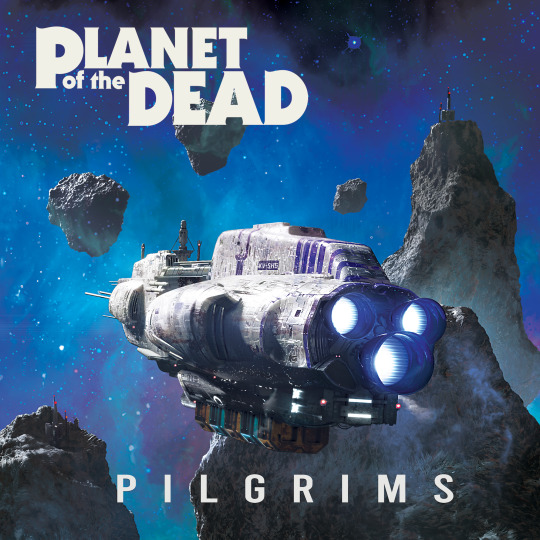
Album Art by Jonathan Guzi
Every other day there's a story that calls our eyes heavenward to wonder about new planets discovered in nearby solar systems, terraforming Mars, or exploring the smallest elements in the universe. Anywhere has to be better than here, any time better than here right now. At least that's what a lot of people are feeling. How about the power of music to elevate us into vast dimensions of the imagination. One band out of New Zealand is interested in finding out what limits one can breach when the driving power of doom rock is hotwired with adventurous sci-fi/fantasy storytelling.
I speak, of course, of Wellington quartet PLANET OF THE DEAD Last year, Mark Mundell (vox), Malcolm McKenzie (guitar), Kees Hengst (bass), and Josh Hussey (drums) brought us the impressive first introduction to their soundscape and narrative concept, which elicited no small amount of praise for 'Fear of a Dead Planet' (2020), including the enthusiastic Bandcamper who gushed, "Some of the best jams I've heard in this universe!" Listen to fan favorites "The Eternal Void" or "Mind Killer" and you'll discover why there's excitement around this band's future.
But Planet of the Dead wasn't done yet. As many of us have already experienced, unexpected and elongated times of forced aloneness do crazy things to the creative mind. For one, it frustrates, as you cannot express the present songs you feel so strongly about to live crowds filled with spontaneous drifters. The moods usually shift out of sheer exasperated boredom, leading to the insatiable urge to begin tinkering again. 'Pilgrim' (2021) comes at us like an explosion with stories to tell and songs to wail. It's purpose-driven interdimensional doom we're talking about here. This may have been the impetus behind the second album’s creation, so closely after the birth of their first (incidentally, both records feature exactly eight songs a piece).
"Gom Jabbar" is the first creature we chance upon in this otherworldly dimension. He speaks with synth-enhanced vocals (ever so slightly) that's practically like an alien encounter if you listen to it high (gosh, sorry. I've gotta stop leaking album reviewer secrets like that). A defiant second voice joins the dialogue, sounding for all the world like Goliath, Hercules, or Hulkian figure.
"Pilgrim" stirs up grey and purple auras as this groovy sandcrawler glides across dunes and high above deserts, searching for the most fitting place to (re)build the world they once knew, perhaps even dare to dream beyond it. I'm assuming they're a scientific voyage on the run from a restrictive government in a week's long mini series I should have pitched to NBC 20 years ago for big bucks. The song allows your imagination drift on its own recognisance, before the closing words call us back to the shadows.
A dire feeling blankets the air throughout "Nostromo," a stomping little number that's straight-up doom rock, with a cool streetwalking kind of stride. It's impossible to not to think of previous adventures aboard vessels christened Nostromo, but each are mysterious encounters with the unknown, some of which yield new insights into our humanity by taking us back through some strange luck of heavy metal time travel to experience pivotal moments in astral history.
"The Sprawl" may be one of the most dismal legs of this journey, but in an exotic acid-soaked kind of way that makes you question your reality (and your own sanity) before the trip is done. The song is good about building various layers of joy and tension, then meshing them together for some distorted, fuzzy, electric, sparkin' Frankensteinian experience. Where will the spiral take us next? Confident lead gets a riff-enhanced jolt, staging march-like-groove that eventually turns meditative, psychedelic, and ethereal. And that's just the first side of the record! Go ahead, flip it over. You can't stop this far-invested in the trip. Shhh. Listen. Grungy, rumbling energy, extraterrestrial harmonics, and gnarly acid-touched solos are just ahead.
"Escape from Smith's Grove" jars the senses with the unexpected tonal shift from clarinets into a seismic pattern of eruptions that match our stomping feet. This is, after all, a jailbreak of sorts.
"Directive IV" takes the perspective of an enforcement officer who is just doing his job. Mark Mundell's vocal stylings are on-point. For me they compare to the pipes of the late-great Wayne Static, the spastic, growling frontman of Static X. Others may see more similarity with the "common man" grit of Scott Angelacos from Hollow Leg and Junior Bruce. Or even Kirk Windstein's apocalyptic spitfire with Crowbar.
The song appears to be a struggle of conscience between compassion and machine-like order, a tug-of-war that after several epic call and response segments in which our protagonist is put on trial by his peers. The tight grip of fascistic space goons gradually loosens their grip in the song's final minutes, as a street-worn riff storm carries our rebels far away from the grasp of whatever the fucks. That means our (now treasonous) soldier has a second chance at life in the (are you ready for this?) the unknown wilds of...
..."The Cursed Earth." This is a perfect song for that moment in a show when the alcohol or "legal tobacco" has sufficiently unlocked your third eye with stellar riffs and choruses (this song has several "ah-ha" moments). The vocals are obscured here and are sometimes backed up by other singers to emphasize a specific point in the lyrical narrative. The final moments again are slowed down with impactful tonal moments that make you think you're on the edge spying some strange meeting of warrior souls.
Things are not what they seem They never are
"The Great Wave" pulls you right into its hypnotic sway, interjected with extraterrestrial strains of thought communicated as if by a very blasted HAL 9000, our onboard computer. It's downright creepy when it hits you. Then again, maybe that's what we want from an intrepid album such as Pilgrim, to rope us into a fascinating narrative and invite us to return to sort out the details, several spins down the road. Now that I think of it, maybe these songs are all references pinned to great Alien, Robocop, and Judge Dredd moments? Listen closely to "Nostromo" and "Directive IV" and wonder. A good album should do that to a person, draw you into its storytelling and musical colour. It has me listening to it immediately from beginning to end, then end to beginning. If you wanna give it a shot, Planet of the Dead's monsterpiece will definitely reward your back-to-back listens.
Look for Pilgrims to come to life on July 23rd, with a fantastic spread of options on vinyl and CD (pre-order here). In the meanwhile, Planet of the Dead are letting us join the party leading up to the big drop right here at Doomed & Stoned HQ, where you can hear each track in full. Don't miss crucial insight from the band itself in 'Some Buzz' to follow. Then join in sharing your thoughts and theories (stoned or otherwise) on this transcendental New Zealand metal album in the comments below!
Give ear...
LISTEN: Planet of the Dead - Pilgrim
SOME BUZZ
Just little over a year following the release of their auspicious debut album, 'Fear of a Dead Planet' (2020), which attained more than 35,000 views on YouTube, New Zealand cosmic stoner and doom four-piece band Planet of the Dead are back with a new full-length album titled 'Pilgrims' (2021).
Hurtling towards the forever yawning void within their busted-up space freighter, they draw inspiration from classic science fiction and horror, and push supermassive and megalithic riffs to the outer limits.

"Our second album came together around the titular track 'Pilgrim', which is based on the book 'Slaughterhouse 5' by Kurt Vonnegut. Musically, it plays upon the themes of moments trapped in the amber." So says the band about this new album.
"Our basic concept is heavy music played heavy, and we try to keep it simple. There are recurrent themes in our riffs which gives the album a sense of coherence, but we've experimented with some new sounds in the latest album which we feel results in a greater sense of dynamism.
"Lyrically, we dug deeper into our obsessions with classic sci-fi and horror. There is a distinctive and undeniable fan-fiction element to our work. We actively seek out cultural references, and weave them into our tapestries. Ultimately, we do everything we do for the great god Dyzan, for his greater glory...and for our mutual pleasure.”
Set for release on July 23rd, 'Pilgrims' will surely cement Planet of the Dead’s reputation as serious riff merchants.
Follow The Band
Get Their Music
#D&S Debuts#Planet of the Dead#Wellington#New Zealand#doom metal#stoner rock#fuzz#sludge#metal#D&S Reviews#sci-fi#Doomed and Stoned
6 notes
·
View notes
Text
Bo Burnham: Inside Songs Ranked from Worst to Best
https://ift.tt/2JMbiJl
The musical of the summer was supposed to be a life-affirming celebration of one of New York’s most vibrant neighborhoods, full of color, romance, and big group dance numbers. Instead for many viewers, the musical of the moment was filmed and performed by one man, alone in isolation from the comfort (or discomfort, really) of his own home, with songs centered on techno paranoia, mental health, and the fear of aging. Maybe after a year stuck in their homes, audiences could relate to the existential dread and general anxiety on display in Bo Burnham: Inside more than a conventional movie musical.
Billed as a stand-up special, Burnham’s latest musical comedy endeavor finds the former wunderkind holed up and feeling more uncomfortable than ever. Writing, editing, directing, and performing from a claustrophobic studio, Burnham’s stand-up special skews more toward being a straight-up musical, and not because the special is light on jokes and missing an audience. Rather this has all the hallmarks of a musical narrative and plays closer to experimental cinema than sketch comedy.
Burnham expresses his characters’ inner-thoughts, fears, and desires via song throughout a contained narrative, in this case the narrative being one man trying to occupy himself during a pandemic. It has ballads, charm songs, comedy numbers, “I Am” and “I Want” songs, and a big reprise. By capturing his personal pandemic experience and putting the whole affair to song, Burnham has created one of the most compelling (and catchy!) accounts of life during 2020.
To celebrate the musical that we all needed after a year in our homes, we’ve decided to rank every song from Bo Burnham: Inside. You can stream along via the Inside (The Songs) album on the streaming platform of your choice.
20. I Don’t Wanna Know
Merely an interlude, “I Don’t Wanna Know” doesn’t quite work outside of watching the special itself. However, it is a clever way to address the fact that modern audiences do not have the attention span to sit through a film at home without checking their phone or complaining about a runtime.
19. Bezos II
While certainly meant to poke fun at the real-life Lex Luthor, it’s not that fun to listen to Bezos’ name repeated. Stil, Burnham does elicit a few laughs with his over-the-top mock congratulations. “You did it!”
18. Any Day Now
A Sesame Street-like mantra that plays over the credits, “Any Day Now” suggests this could all end either hopefully soon or on a depressingly vague far-off date that will never come. We’d like to think it’s the former, but it’s safe to assume what Bo thinks.
17. All Time Low
While this number gets docked points for its short runtime, it absolutely packs a punch with its four-line, single verse. After Bo admits that his mental health is rapidly deteriorating, he describes what it’s like to have a panic attack set to a chipper ‘80s dance backbeat. Unfortunately, we don’t get to ride the wave long enough, and judging lyrics, that’s probably a good thing for Bo.
16. Content
This strong opening number musically sets the vibe for Inside, letting us know that we’re in for some synth-heavy throwback beats that would be best listened to underneath a disco ball. Also incorporating silly backing vocals, a hallmark of many of Inside’s best tracks, Burnham declares he’s back with some sweet, sweet content. “Daddy made you your favorite,” he sings, and he ain’t wrong.
15. Bezos I
Unlike the reprise in “Bezos II,” “Bezos I” gets by off its increasingly deranged energy, with Burnham roasting fellow tech billionaires and working himself up into a manic frenzy by song’s end. Musically, it sounds like the soundtrack to an intense boss battle on a Sega Genesis game before ending with a sick little synth solo and Burnham hilarious squawking. It’s arguably the only acceptable thing that Bezos has ever been associated with.
14. Unpaid Intern
While “Unpaid Intern” is one of Inside’s shortest tracks, it absolutely makes the most of its time. The jazzy tune scorches the exploitative nature of unpaid internships before Burnham breaks out into a laugh-out-loud worthy scat routine. It unfortunately ends too soon.
13. Shit
Inside’s funkiest jam sounds like Burnham wrote the lyrics for a new Janelle Moane album cut. Bo show’s off his vocal dexterity and plumbs the depths of his depression in a surprisingly danceable fashion. Throwing in a little faux crowd interaction helps bring home the fact that we have all felt like this at one point or another during the pandemic.
12. Sexting
This slow-jam details the complications of sexting, throwing out hilariously too-true punchlines like “the flash makes my dick look frightened.” “Sexting” feels like one of a few songs that could most easily appear on previous Burnham specials. Proving that Inside’s musical textures do not come exclusively from ’80s synth pop, the outro of the song expertly mirrors modern pop trends by throwing in some trap-influenced “yahs” at the end of Bo’s lines.
Read more
Movies
Best Movie Musicals of the 21st Century
By David Crow
TV
What Would a Queen’s Gambit Musical Look Like?
By Alec Bojalad
11. How the World Works
Influenced by comedian Hans Teeuwen and children’s entertainment in general, “How the World Works” finds Burnham going back to the well by playing the ignorant, smarmy white guy who is oblivious of the real issues plaguing nonwhite Americans. What’s even better though is Socko calling Burnham out on forcing others to educate him for his own self-actualization instead of doing the work on his own for the betterment of others.
Socko pointedly asks “Why do you rich f��— white people insist on seeing every socio-political conflict through the myopic lens of your own self-actualization?” Not to keep things too heavy, the song ends with an absurdist bit where Burnham returns Socko to the nether place that he goes when he’s not attached to Burnham’s hand. Scathing and bizarre, it’s a great piece of social commentary.
10. FaceTime With My Mom
While most of the music of Inside feels directly transported from the 1980s, “FaceTime With My Mom” seems only inspired by the past decade’s musical trends, updating the sounds in much of the same way that the Weeknd and Dua Lipa have. This is Bo Burnham as a hitmaker, and his attempt is convincing. “FaceTime With My Mom” earns easy laughs by getting to the seemingly specific, yet universal things that all our moms do over video chat.
9. Goodbye
Every good musical needs a good closing track, and Burnham nails it with “Goodbye,” pulling off a reprise that weaves in many of the special’s signature musical moments and touches on the special’s core themes. A forlorn piano ballad before it soars through Inside’s best motifs, “Goodbye” caps a triumphant musical achievement, coming back to “Look Who’s Inside Again” just to punch you in the gut one last time.
8. Problematic
Addressing his past work and some aspects that have not aged well, while also skewering celebrity apologies, “Problematic” is self-aware critique by way of an ‘80s workout bop. From the specific Aladdin confession to the overall apology for being “vaguely shitty,” Bo has never made accountability sound so good.
7. That Funny Feeling
This is Bo Burnham’s version of Father John Misty’s “Holy Shit,” a laundry list of all the stupid things that are signaling the fall of culture and civilization as we know it. If Misty hadn’t gotten there first, we may have had this one ranked higher. Still, Burnham manages to come up with a sticky chorus that you’ll be humming the next time something makes you feel like you’re living in the uncanny valley.
6. White Woman’s Instagram
Perhaps the special’s most playful moment, “White Woman’s Instagram” uses the musical cues of an inspiring empowerment anthem to poke fun at the predictably, perfectly curated feed of a “girl boss” Instagram. The song is greatly enhanced by the accompanying visuals, which find Bo recreating the meticulously staged and glamorous portraits that women pass off as their everyday lives.
However, Bo always likes to sneak in some sentimentality, and imagines a genuinely heartfelt post to his white woman character’s deceased mother. Don’t worry, the emotional moment doesn’t overstay its welcome, and we’re soon back to laughing at horribly derivative political street art.
5. All Eyes on Me
The droning synth and pitch-down vocals make “All Eyes On Me” oddly hypnotic and beautiful. The song seems to be addressing Bo’s depression along with his need for validation and attention, a juxtaposition that many performers deal with. It becomes clear that Burnham isn’t addressing an invisible audience, but himself, trying to will himself up and out of his dreary mental state.
4. Look Who’s Inside Again
A classic “I Am” musical song, “Look Who’s Inside Again” just may be Inside’s most emotionally resonant track that seems to hit closest to who Bo Burnham was and who he is today. This is the song that I will most likely regret the most for ranking so low.
“Well, well, look who’s inside again. Went out to look for a reason to hide again,” perfectly describes the cycle of depression and will, for me, be the special’s most lasting moment. The downbeat ending “come out with your hands up, we’ve got you surrounded” is heartbreaking enough to send a shudder down your spine.
3. Comedy
The special’s real first number is absolutely packed with hooks, from the “Call me and I’ll tell you a joke” bridge to the “Should I be joking at a time like this?” change-up. This is Bo really flexing how far he’s come as a musician, expertly utilizing autotune and a key change (us “stupid motherf***ers” can’t resist them).
“Comedy” also finds Bo comfortably in the lane that we’re most used to seeing him in, playing the egomaniacal white messiah with a wink. “Comedy” is the tone-setter and it’s so good that it lets you know that you’re in good hands for the next hour plus.
2. 30
Either I’m ranking this song too highly due to its personally relatable nature or the fact that I haven’t been able to get “All my stupid friends are having stupid children” out of my head, but I really don’t care. “30” is Inside’s biggest earworm and addresses the existential terror that comes with no longer getting pats on the back for being a young wunderkind.
“30” also examines generational differences, showing how 30 year-old people are more infantile than ever. However, at the end of the day it all comes back to those shimmering keys and that irresistible refrain. Apologies to my friends with children.
1. Welcome to the Internet
No matter how deep and emotionally rich some of Inside’s other tracks may be, “Welcome to the Internet” is the one that will live on the longest. If this were a traditional musical, this would the antagonists’ showstopper; a vaudevillian romp through the alluring chaos that is the internet. Speeding up and slowing down the pace to mirror the manic, addictive nature of surfing the net, Burnham pitches the negative aspects of online culture as they are: a feature, not a bug. Promising “a little bit of everything all of the time,” “Welcome to the Internet” is almost as enticing as the dark tool itself.
cnx.cmd.push(function() { cnx({ playerId: "106e33c0-3911-473c-b599-b1426db57530", }).render("0270c398a82f44f49c23c16122516796"); });
The post Bo Burnham: Inside Songs Ranked from Worst to Best appeared first on Den of Geek.
from Den of Geek https://ift.tt/3d0eX1x
1 note
·
View note
Text
My Top 100 albums of 2017
I listened to too much music in 2017. It was hard to keep track. Pop music was weak as fuck, I didn’t really find much joy in it, but I was finding roughly 10-30 albums each month that I could really enjoy in other genres. Many of these were releases on small labels. I must admit, listening to this much music made it hard to enjoy this much music. I don’t think I’ll be doing this in future. I have whittled it down to the 100 albums that came out in 2017 that I spent the most time with, that really lasted in my mind as great new music, i.e. my favourites, and while I try to be objective about my criticism, it’s still about what speaks to me specifically. Everything beyond the top 10-20 is in a pretty vague order, vaguer as it goes, with the final 20 being albums I liked a lot but didn’t spend as much time with, hence the vaguer reviews). I’ve limited each review to roughly 100 words (fewer as we go along, in fact, I tapped out towards the end because I got tired of writing. This took longer to do than I planned and fuck it), and as with last year’s list, I’ve intentionally avoided the use of genre words and pointless artist comparisons (as much as is possible). Check each record out on the merit of the content, not the style, and you will enjoy more.

1. Bjork - Utopia
Utopia sees Bjork return from the darkness with a fresh optimism, and also a fresh process and palette of sounds. The open form/narrative led song writing, and seemingly meandering vocal style that has been gradually replacing the pop style of her early albums has firmly cemented itself, and while not having an obvious verse/catchy chorus form, or club banger beat might be a barrier for the uninitiated, it is one of the album’s strengths, as Bjork explores the themes of the lyrics with some incredible arrangements and some of the most curious production experiments of her career, creating probably the most Bjork album yet. It’s dense and joyous, takes no prisoners in its honesty, and is lush as fuck.
Favourite tracks: Arisen My Senses, Claimstaker
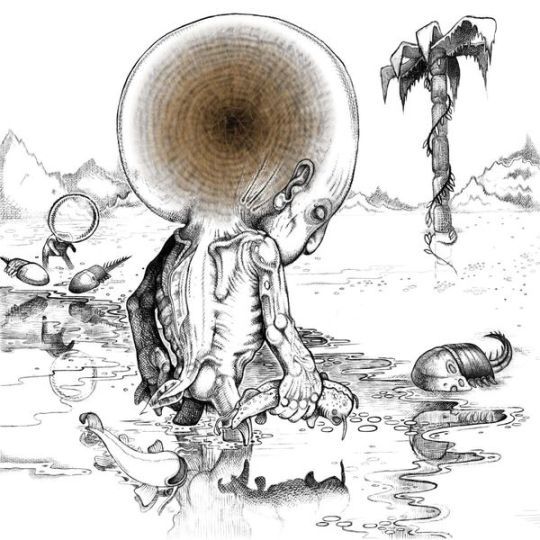
2. Shackleton and Vengeance Tenfold - Sferic Ghost Transmits
Undulating and pulsing bells, acoustic and synthetic percussion, and cinematic swells of scifi synthesizer drones and blips framing a half spoken, half sung narrative about some dark shit. It’s the juxtaposition of the deep, almost monotone delivery of the tormented lyrical content and the brightness of the production, the activity in the sounds that really makes this music come alive. There’s something otherworldly and ancient about the material, curious and yet familiar. The poly-rhythmic patterns and the rich palette of sound textures draw one in for repeated listening, making this a highly addictive record.
Favourite track: Five Demiurgic Options
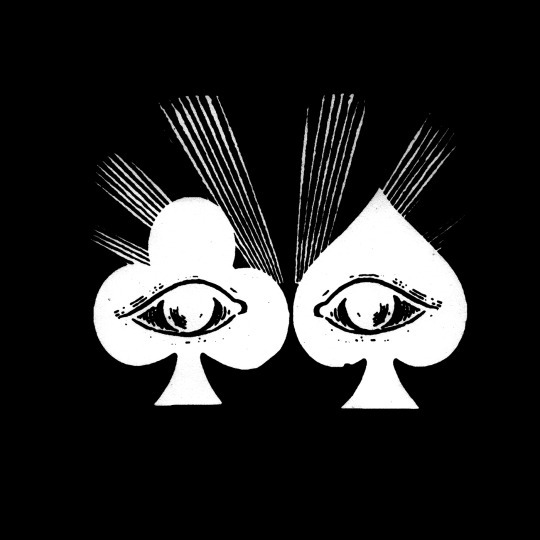
3. Children of Alice - Children of Alice
There’s so much going on in this music. A strange collage of textures and instruments play out a montage of ideas, flowing together in a seamless exploratory form. If there’s a story here, it’s not being expressed in any literal terms, yet the mood seems to flow in a radiophonic sort of way, and the listening journey is a blast. There are moments that the album falls into recognisable bursts and loops of what could be called “music” but the tracks don’t dwell on developing these ideas in any uniform or traditional fashion, and the pleasure here is how the disjointedness and variety keeps the listener on their toes, especially when several opposing genres and tonal centers begin overlapping. Then the magic really starts to happen.
Favourite track: Rite of the Maypole - An Unruly Procession

4. Saicobab - SAB SE PURANI BAB
What seems on paper as a really simple combination of instruments, becomes an intricate map of rhythm and unexpected sound interplay. The compositions are led by the voice and sitar, and glued together by a percussionist and double bassist. The backings are often as furious as the foreground energy, but the mix gives the instrument hierarchy a tension that totally serves the music. There is an additional level of intrigue in the quality of vocal treatments and fx that elevates the strangeness of the record. At times the energy is chaotic, but the music is highly organised, and while striking the balance of these feelings is no easy task, Yoshimi and co get it right.
Favourite tracks: aMn nMn, Bx Ax Bx
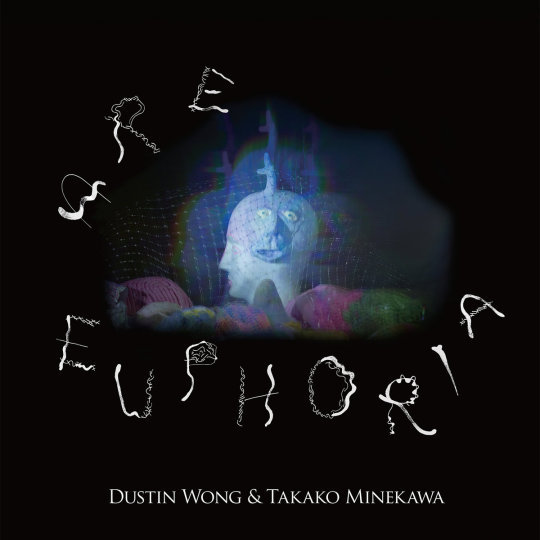
5. Dustin Wong & Takako Minekawa - Are Euphoria
Well, this is such an apt album title. The music on Are Euphoria is itself dancing. This is music reveling in process. Nothing ever really feels settled, but without giving off an unsettling feeling. Rather, it’s an exciting kind of bliss, the thrill of the search. Beats morph tempo, melodies orbit the tonic but hardly resolve, busy textures scratch away beneath nonchalant, liquid vocals, it’s all very quaint, yet mature and highly addictive. Mostly this album is just fun. Fun because one can hear the joy that went into it, and the euphoria is not just expressed, but easily received.
Favourite tracks: Zaaab, Haha Mori

6. Rabit - Les Fleurs Du Mal
“Chop it up”, says the voice that opens this album, giving perhaps an obvious indication of the process behind the music that follows. Sharp strikes of strings and cut up bits of dialogue in various languages merge with mangled atmospheres and asymmetric synth melodies. There’s a lot going on in this album, but never too much at a time. It’s immersive, but there’s a sense of buoyancy. The album carries a dark quality throughout most of the themes, but it’s an enjoyable darkness, less overt terror, more curiosity. There is a prettiness that pervades the evil. Another aptly titled album.
Favourite tracks: Possessed, Ontological Graffiti, Bleached World
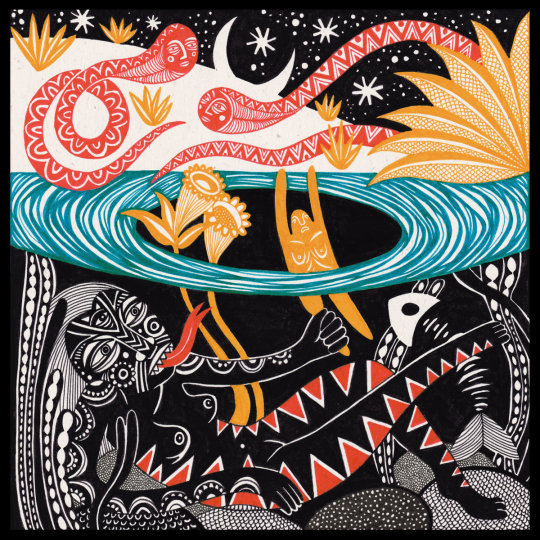
7. Yazz Ahmed – La Saboteuse
Yazz Ahmed’s trumpet tone is impeccable, and on this album she has assembled a cast of amazing players to deliver some incredible moments of ecstatic musicality. There’s a lot of brilliant soloing, infectious melodic themes and well-planned arrangements. The balance of light and shade, big and small, old and new, is constantly moving, like a tightrope walker, balanced and sure footed, but never at rest, never without risk. The album is a constant slight of hand, lulling the listener with warmth and gentle caresses, but beyond mere background moods, it’s full of adventure, and one can’t help but accept the quest it presents.
Favourite tracks: Al Emadi, The Space Between the Fish and the Moon, Bloom.

8. Emel - Ensen
Emel has the most haunting, captivating voice I have heard in forever. I don’t even really know what her songs are about, because she is from Tunisia and sings mostly in Arabic. This album is sombre in tone, and occasionally brutal. The drums sound huge, although they sound like small instruments turned up with great urgency. Even at it’s subtlest moments the album is urgent and immediate. That’s not to say the album is direct or blunt, it’s full of elegance and finesse, but it isn’t really nice, it’s beautiful and human, and it’s the latter quality that perhaps lets the darker side in.
Favourite tracks: Lost, Kaddesh, Ensen Dhaif.

9. Somi - Petite Afrique
This album was a surprise. The tone is set with a little soundscape/collage of music and dialogue snippets, and then segues into a beautiful reworking of Sting’s Englishman in New York (substituting Englishman for African). The chords are re-harmonised and the lyrics altered, translating a new meaning. Moving onward, the theme continues, lyrically exploring racial identity, and musically pushing the boundaries of African and African American music traditions. It’s a soulful and militant record. It’s catchy, but fully loaded with potent messages, wicked grooves, and hot arrangements.
Favourite songs: Black Enough, The Gentry.

10. Adult - Detroit House Guests
Adult invited a bunch of artists to stay at their place in Detroit and collaborate on some music whilst there. Artists including Robert Aiki Aubrey Lowe, Michael Gira, and Douglas J McCarthy (and more) contributed ideas and vocals to the album. It’s a trippy, synth laden affair. Lots of cool modular sequences and minimal beats, matched with mantra like vocal passages, all whirling around together to create a pretty arty combination of club music and experimentalism. It’s a slow build over about the first 4 tracks, but once it gets going, it’s just a blast to move your body to. However, the weirdness doesn’t let up, and makes for great listening and dancing alike.
Favourite tracks: We Are a Mirror, This Situation.
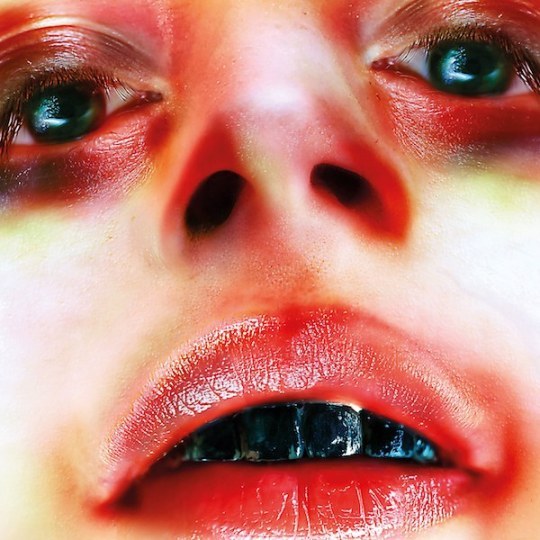
11. Arca - Arca
It was such a surprise to hear Arca sing. Having produced tracks for so many vocalists, it was probably only a matter of time before they got on the mic. Arca’s voice expresses a sense of fragility, but it’s a deep and personal fragility, definitely not musical. Of that, there is confidence, expertise. The melancholic melodies are expertly accompanied by very sparse instrumentation, and the results are elegantly spun threads of sonic gossamer. But the album does take off and hit hard at times, with some instrumental tracks more reminiscent of earlier Arca works, but they’ve developed the sounds and ideas further, and these moments fit with the new sung material well.
Favourite Tracks: Anoche, Desafio.

12. Noveller - A Pink Sunset For No One
Noveller, aka Sarah Lipstate plays all this beautiful ambient music on an electric guitar. Her sounds are amazing, and the way she weaves it all together with a single instrument is masterful. I think what I appreciate about this record is the virtuosity it displays without ever needing to stand out. The tracks are all quite subtle, and even when the dynamics swell, it’s not about showing off, it’s about tension and release. They are great compositions, and Lipstate’s consummate execution make them a dream to immerse ones self in.
Favourite tracks: Rituals, Another Dark Hour.

13. Dale Cooper Quartet and the dictaphones - Astrild Astrild
Composed of lush, noise riddled drones, moody saxes and dreamy vocal croons, Dale Cooper Quartet & the Dictaphones perfectly invoke their namesake. Like a dreamy cinematic tribute album, but with all the right grit and character to own it. There’s some amazing atmosphereic floating choir “ahs” drifting between the sax lines, and some incredible soundscape tracks that barely feature any “notes”, they swell and dip and build some tension, interspersed with only a few dynamic peaks. The album is all tension and only a few moments of release, but they are beautiful releases. It’s a long album, with long tracks, and it’s a commitment to listen, but worth every second.
Favourite tracks: Pemp ajour imposte, Son mansarde roselin

14. Craig Taborn & Ikue Mori – Highsmith
Tarborn’s incredibly virtuosic avant –garde piano playing blends perfectly with Mori’s masterfully designed electronic textures. The two become one, effortlessly creating new worlds of sound with each gesture. Each piece explores the sound sources in a unique way. There’s a constant juggling of hierarchy that makes for interesting tensions, and while the complexity of the rhythmic textures and atonality make the album dense with information, it also has a really fun quality. The energy keeps it entertaining, but the talent and artistry elevates the listening experience to a state of enlightening euphoria.
Favourite tracks: Music To Die By, Variations On A Game
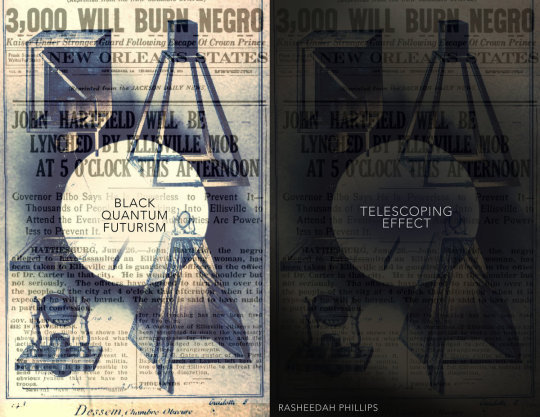
15. Black Quantum Futurism - Telescoping Effect Pt. 1 Soundscape
This album was composed/designed to accompany the words of Rasheedah Phillips, whom I was lucky enough to see perform with Moor Mother recently. On its own, this music is a powerful work, and an eclectic listening experience. There’s a sense of narrative built in to the collage of sounds and genre, a sci-fi attitude pervades the nature of electronic and synthesized elements, all the while balanced by a celebration of black American culture. It’s intense, and intensely musical without needing to fall back on tropes or tunes. Music that balances on that fine line between radiophonic story telling and acousmatic concrete/collage, with a fresh and engaging character.
Favourite track: 1919 (Saros Cycle)

16. Matt Mitchell - A Pouting Grimace
This album is dense, atonal, and rhythmically manic. It sounds like free improvisation, but feels highly organised. To be honest, I don’t want to know which it is (lies, I want to know everything). The virtuosity of the musicians is incredible, but the artistry in both the compositional forms, and how fearlessly the music is expressed are the real strengths of the record. The organised chaos could be annoying or pretentious, but it’s neither, it’s tasteful, exciting, and incredibly contemporary.
Favourite tracks: Mini Alternate, Heft.
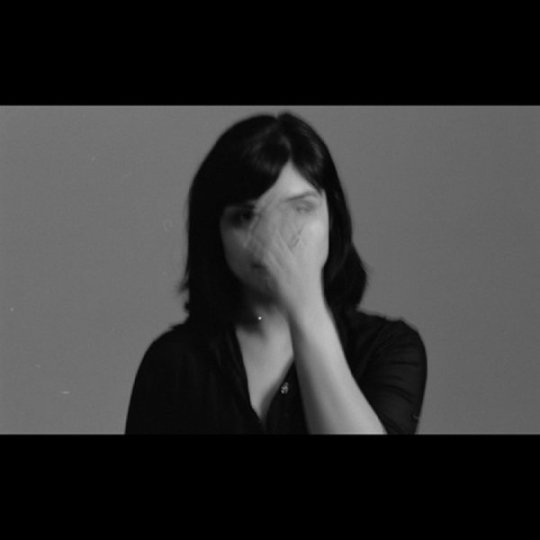
17. Sarah Davachi - All My Circles Run
Davachi explores drone, stasis, duration, and the potential of simplicity in four different ways on four different instruments. The pieces for strings, voice and organ respectively, work in similar ways, with overlapping sustained tones gradually replacing one another, but the final piece, composed for piano is obviously a different approach, a kind of La Monte Young era minimalist approach to piano playing. The piano work isn’t out of place or character though. The album is broken up in the middle with “chanter”, another piano piece with a similar feel that ties the whole thing together at the end. It’s some incredible ambient background music, but also beautiful for deep listening.
Favourite track: For Organ.

18. Nicola Ratti – The Collection
Ratti’s Collection begins with a sophisticated arrangement of minimal rhythmic pulses and blips, some overlapping tones emerging from some swells of noise, developing slowly and gracefully into a gorgeous understated composition. The tempos and patterns change from track to track, but Ratti maintains a consistent quality and palette of sounds and across the album, doing as much as possible with the sparse instrumentation. It’s a brilliant album of delightful electronic sounds and intriguing patterns.
Favourite tracks: L2, L8.
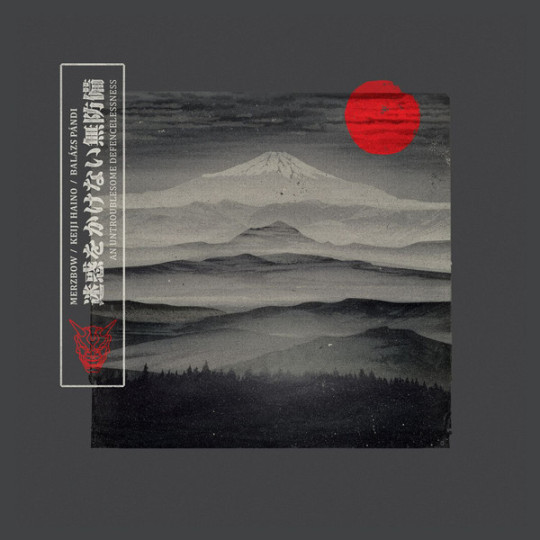
19. Merzbow, Keiji Haino, Balazs Pandi – An Untroublesome Defencelessness
This is ultimately a drum record. Balazs Pandi is a monster. The drumming is off the hook. Haino and Merzbow exist as energy, fuelling the onslaught. That’s not to say the album is without variation or dynamic. The record has plenty of variety, up and down moments, subtlety, brilliantly crafted noise, beats, riffs, even some shouted vocals that tie it all together. It’s a sonic journey of discovery. Writing about music like this feels pointless because it taps into something more primal than words. However it feels more political than primitive. This music is reaching into the depths of the human condition.
Favourite track: How Differ the Instructions of the Left from the Instructions of the Right? (Part III)
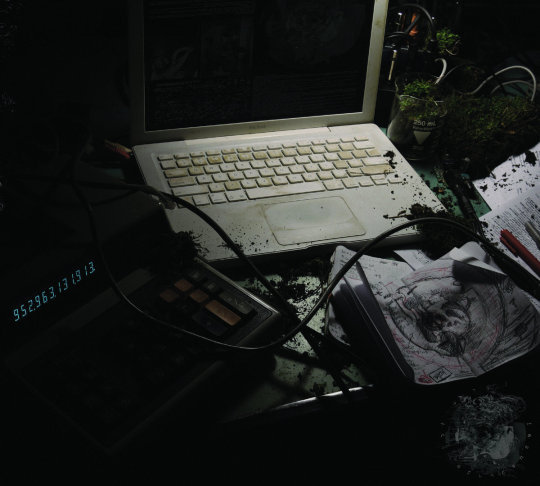
20. Cleric - Retrocausal
Holy shit. Cleric do everything, like, they play all the notes, all the styles, all the… volumes (?). This album covers a lot of ground, and it doesn’t hold your hand or buy you breakfast first. Fuck, the first track alone is a relentless journey of musicality and brutality. Some of the heaviest riffs of the year, but also some maniacal juxtapositions and ruptures that cause it all to be even more interesting and intense. In the end though, this music is all the more engaging because it stretches so far beyond mere “heaviness” and brings in all these extra colours and feels. Not to mention, it’s great to have a heavy band with some idea of contemporary tonality that stretch beyond diatonic neoclassical lameness or drop D minor modal bullshit. Cleric fucking rule.
Favourite tracks: Ifrit, Resumption.
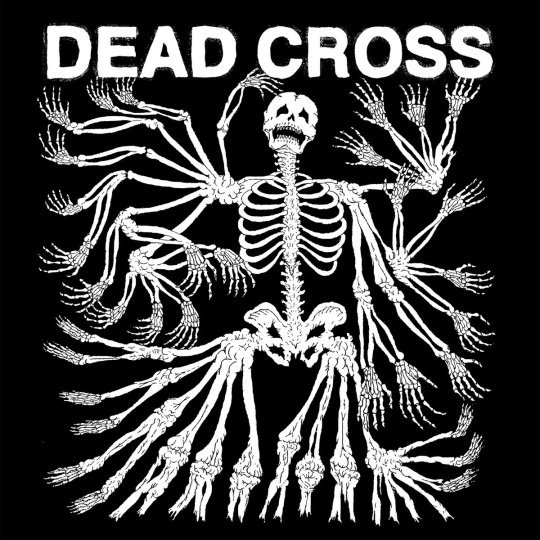
21. Dead Cross - Dead Cross
To think I almost didn’t bother checking this out. What a loser I’d have been. Dave Lombardo put a hardcore band together, and got Mike Patton involved on vocals, and it totally works. Some great lyrics on here, and Patton is on top form, showing no signs of going soft. The star of the record is the drums, Lombardo is a tight and ballistic barely even covers it when he’s underway. The song writing is also a highlight, the riffs and breakdowns, and overall catchiness of the album really makes this some brutally infectious music.
Favourite tracks: Idiopathic, Grave Slave

22. Alessandro Cortini - Avanti
This album is very special. I feel lucky in that my first hearing of it was a live performance. I saw Alessandro give a talk about synths and his process making the album, and then saw him do the album in full, with old home movies that his grandfather made playing in the background. The record is a beautiful nostalgic reflection. Made entirely with a EMS Synthi AKS (processed through guitar pedals) the beautiful drifting tones and the simplicity of the melodies makes this the kind of music one could be lost in forever, swept up in a daydream and forget time altogether.
Favourite tracks: Aspettare, Iniziare
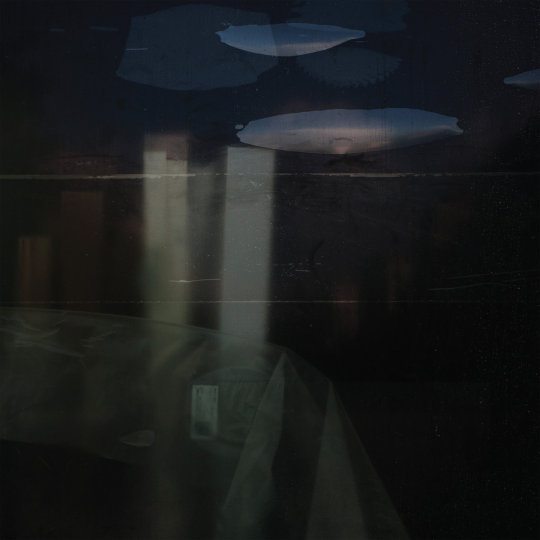
23. Demen – Nektyr
Demen make soundtracks to dreams. This music is pacifying and disarming. It is spacious, lush, expansive, and yet reserved. Elegant, is perhaps the most apt adjective. The drums are huge and distant, drenched in reverb, as is almost everything, giving the music it’s floating quality. The hamonic shifts are few and far between, making the subtlest of transitions feel enormous. While some tracks begin with long emphasis on emptiness, the dynamic and emotional range of this album is not to be underestimated.
Favourite tracks: Niorum, Illdrop, Ambur.

24. Mary Halvorson Quartet - Paimon
I’ve been a big fan of Mary Halvorson’s guitar work since her appearance on Trevor Dunn’s Trio Convulsant record. Here her playing and arranging are put on fine display as she interprets Zorn’s Masada material, for Book of Angels volume 32. The Quartet of drums, bass, and two guitars makes for a thicketed texture, and the musicians approach the material this way – texturally – more than they cover traditional jazz quartet roles. There’s still plenty of attention to the melodic frameworks of the original compositional intent, but the group has a tendency to go full battle royale in the solo sections, rather than politely accompanying. The soloing is superb, but the madness is part of what makes the Masada material so special, and Halvorson and co have captured it beautifully, adding a masterful spark and character to this ongoing series of releases.
Favourite Tracks: Yeqon, Chaskiel.

25. Pinkcourtesyphone - Indelicate Slices
Richard Chartier makes beautiful ambient sounds into dreamy musical landscapes. His new record, Indelicate Slices is a beautiful collection of such music. As the title may suggest, this record isn’t sweet background soundscapes to bliss out to, Chartier is delving into some gritty, dark territory on this album, playing with some suspense and pushing the extremes of what the genre may accept. There are some long moments of almost nothing but the tiniest record crackle, which says something of the artist’s minimalist attitude. It’s exciting to hear this approach to sound, from the negative perspective, as opposed to the tendency for bliss and serenity. The dark mood creates a sense of expectation, which Chartier only pays off in small doses, but they are worth the long moments in between.
Favourite tracks: minimumluxeryoverdose, in voluptuous monochrome
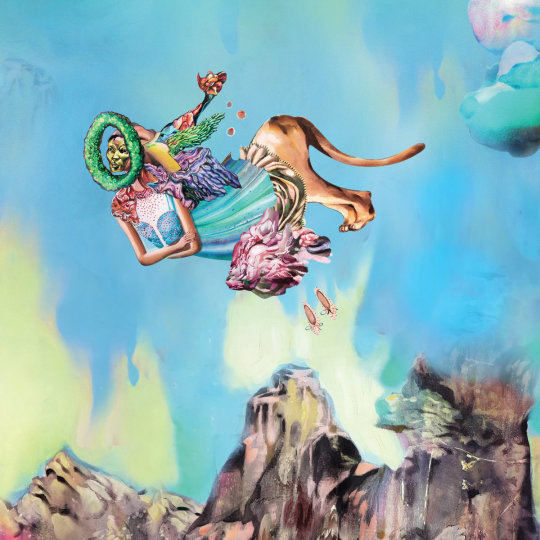
26. Nadah El Shazly – Ahwar
Hailing from the Cairo underground scene, Nadah is a beautiful singer, with an eclectic musicality and and abstract sensibility. Collaged forms of music swirl around, tonalities layer up in exciting unresolved ways, and yet it is always soulful. This is a really colourful record, with carefully attended to arrangements, plenty of chaos, but never a mess.
Favourite tracks: Barzakh (Limen), Palmyra.

27. Gravetemple – Impassable Fears
The tone of this albums is abrasive, the bass and guitar tones (if they even are instruments) are sheets of steel against gravel against my brain. It’s ugly in the most perfect way. It’s almost impossible to think of this as music – almost – but the human voice makes the intensity of the crunching somewhat physical, visceral, and the physicality of the drumming binds it all into something one can truly feel. Then somewhere in the middle the album introduces melodic electronic sounds, crunched, low res sounds that bleed into a fresh roaring onslaught. It’s full of surprises, but the gems protected by berserkers. This is not one to go into lightly, but fucking perfectly rewarding for those with courage.
Favourite tracks: Elavúlt földbolygó (World Out of Date), Domino, Áthatolhatatlan félelmek (Impassable Fears)
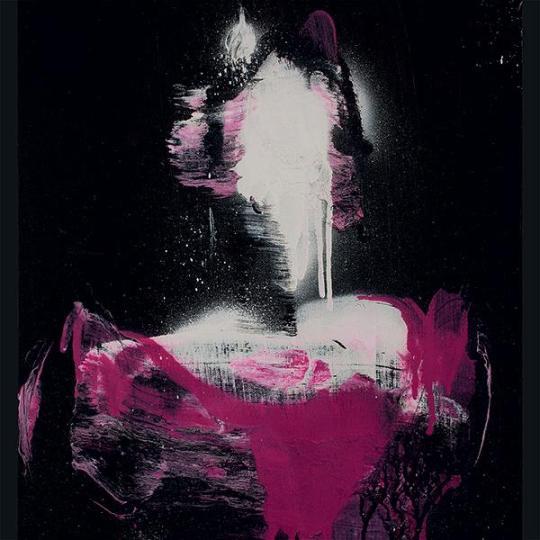
28. Nazoranai – Beginning to Fall in Line Before Me, So Decorously, the Nature of All That Must Be Transformed
From the long slow build of drums and curious noises, opening up to a cinematic landscape of another world, there’s a lot at play here, lots of colour, lots of restraint. It’s as if this group have only a small idea of the headroom they have to play with, and approach the music with calculated precision, allowing for a gradual, yet slow growth. The first track takes about 20 minutes to peak, and it’s a delicious, almost spiritual high point. Part 2 comes down for a moment, just enough to find a new path, before it begins to tear shreds off the feelings created in the first part, until it gets to the magic and truth at the core. When the vocals begin, all seems revealed, the search is over. The final 10 minutes is an unbridled expression of intensity, joyously reveling in the phenomenon of sound. It’s fucking awesome.
Favourite track: Part 2.

29. The Body & Full of Hell - Ascending a Mountain of Heavy Light
Abrasive and dense, the pairing of these two bands ascends to dizzying levels of heavy. Maximum weight and intensity scrape through your ear-holes with this one. A really clever blend of electronic and brutal metal elements, the former used sparingly to add highlights to the later, such as the abrasive synth tone in the opening track, or the bouncy kick and vocal fx in track two. It could be a bit pompous, or even a bit generic “noise band”, but it’s way more fun. It really sounds like this was made in a playfull way, and thus the music keeps you playing along throughout the onslaught.
Favourite tracks: Earth is a Cage, Farewell, Man
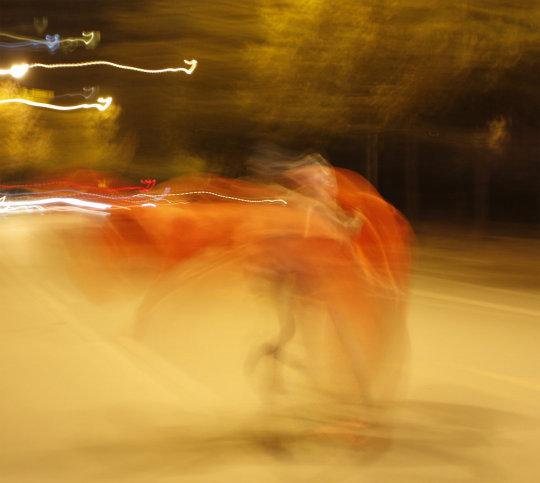
30. William Basinski - A shadow In Time
Basinski returned in early 2017 with a new album, 2 new works that continue the trajectory of his career, and adding a new sense of depth and density to his palette. The album plays with some familiar Basinski processes, the reverb feedback, gradually unfolding over a long duration, stretching and smearing the tones of loops until they become some kind of trans-sensoral phenomenon. The compositions seem more deliberate on this record, with less reliance on loops for loops sake. There’s a clear sense development in both tracks that make them engaging in a new way. I always like Basinski, but I’m loving this more than usual.
Favourite track: A Shadow In Time.

31. Félicia Atkinson – Hand in Hand
This album is a delicate and bold blend of pulsing electronic melodic sound, atmospheric incidental sound, and spoken word. Atkinson’s words and sounds aren’t expressly trying to teach or convey a sense of importance, but there’s something about the delivery that makes every moment feel important, something that needs to be learnt, or learnt from. Compositionally, Atkinson is a master at balancing textures, and the record explores a lot of sonic variety. On the surface the album is calm and you could almost tune out of it, but it is an album of exquisite detail.
Favourite tracks: Adaptation Assez Facile, A House a Dance a Poem

32. Ifriqiyya Electrique - Laa La Illa Allah
This album has a deep dark atmosphere, and dare I say it, something ritualistic is brewing away beneath these tunes. From the masses of percussion, the cave like reverb, and the mantra like chanting vocals of the first track, this group from North Africa have made a captivating collection that weaves in some upbeat bangers, and some super distorted, rumbling bass, creepers to make a potent spiritually cleansing record. I have very little knowledge of the where or who of the group, but it’s certainly not your typical nice easy world music for a day on the green. It’s gritty and up close and uncomfortable, but also kind of ground shaking and infectious.
Favourite track: Stombali - Baba 'Alaia

33. Anjou - Epithyma
Epithyma opens with a series of crossfading, delicate loop slices, melting and morphing shape, pulsing, but never really landing or forming in any repetitive musical sense. Anjou is sneaky with melody, it’s there, sliding around the periphery, never truly taking over or coming into focus. It’s perfectly ambient, by definition. As ideas are exhausted, they’re so naturally replaced and seamlessly transitioned from that one forgets what came before, or how long it may have been. A beautifully constructed collection of synths and space.
Favourite track: Soucouyant

34. Walker Harris English - Walker Harris English
These 4 pieces feel like meditations on existentialist cinema rather than just music compositions. There’s something so haunting about it, and instantly immersive, like being lost in “the zone”. The trio have so masterfully developed and transmutated a realm of unfathomable beauty and familiarity into a mystery. Very little needs to be said beyond that. It’s incredible, subtle music. Listen to it.
Favoutie track: A2: Beyond House

35. Sevdaliza – ISON
This is one of the best singer/electronic music releases I’ve heard in a very long time. It has cool, chill grooves and tasty as fuck sound design, creative arrangements, and it manages to be totally current and on trend whilst unashamedly embodying myriad influences that could be easily failed retro pastiches, but instead serve to strengthen the record, and heighten the moods it’s invoking/expressing. Very disappointed that this didn’t seem more mainstream appeal, because its way better than many things of the genre that had half the content/detail.
Favourite tracks: Hero, Marilyn Monroe.
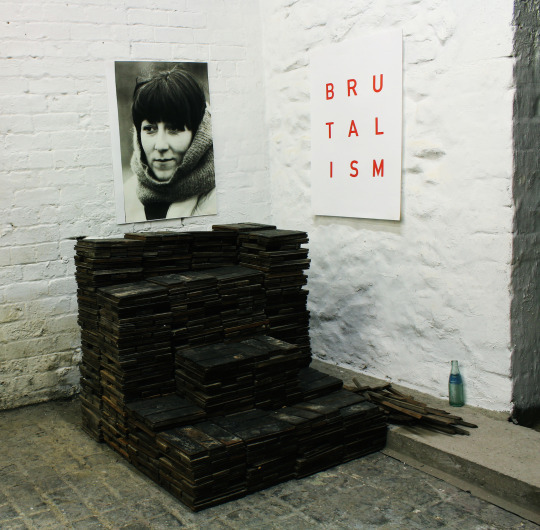
36. Idles: Brutalism
Idles is a brutal reality check. Working class punk rock too late for the world, self-aware, spitting in the face of bullshit and calling it what it is. They are angry, and they have a very good sense of humour about the world and their position in it. They also know sound. The drums and bass are solid bricks and the guitars are like swarms of killer bees. It all serves the lyrics, which I will leave you with a taste: “The best way to scare a Tory is to read and get rich/I know nothing I’m just sitting here looking at pretty colours”.
Favourite tracks: Mother, Well Done, Rachel Khoo, (Fuck it, all of them are brilliant).

37. Xiu Xiu - Forget
Forget is a pretty tidy record. I don’t know if that’s a compliment for Xiu Xiu, but I guess what I mean is that it is cohesive and coherent in a way that translates more directly than many of their earlier releases. I first heard this band live, and so my idea of Xiu Xiu is tied to the stage in a really hypnotic and noisy way, but I found this album has deepened my appreciation of their agenda/aesthetic more than before. Jamie Stewart’s voice sounds better than ever, and the arrangements are lush and exciting.
Favourite tracks: Queen of the Losers, At Last, At Last.

38. Trespass Trio – The Spirit of Pitesti
Sax, bass, and drums is an amazing combination of instruments. It never fails to capture my attention. Trespass Trio keep it simple and soulful, angular and loose, and constantly adventurous. The title track is a dirge like exploration of time and space that conjures an ocean of moods. There’s a few upbeat tracks that swing and hit and dance about the ring in confusing fashion. Very cool stuff.
Favourite track: In Tears.

39. Ulfur - Arboresence
Icelandic composer Ulfur opens his new album with a droney string motif that cinematically crescendos with the sounds of rain, culminating in a blistering explosion of black metal blast beats. This sets the mood for the various extremities one should be prepared for over the course of the record. Ulfur weaves between moody songs and soundscapes, electronic rhythms, dreamy psych-pop and dense spectral sound paintings. A truly unique and eclectic record, masterfully handled.
Favourite track: Tómi› Titrar
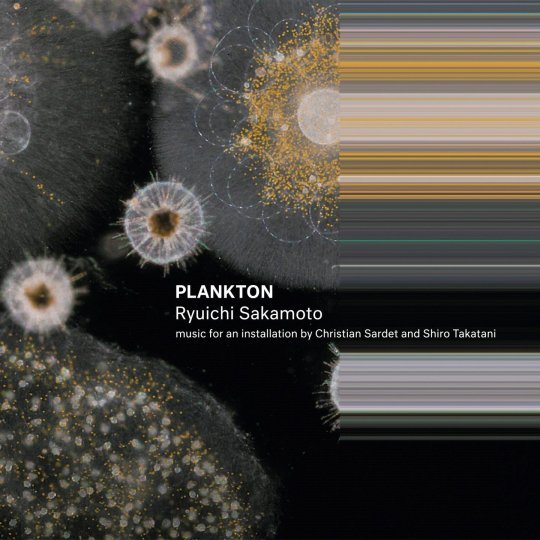
40. Ryuichi Sakamoto – Plankton: Music for an Intallation By Christian Sardet and Shiro Takatani
Plankton is an hour long composition by Japanese legend Ryuichi Sakamoto, designed for an installation that explores and documents the nature of the namesake micro organisms. It’s a subtle and immersive piece. Drawing on the philosophy of ambient, washing across the background with all its splendour and detail, free to be ignored or enjoyed on whatever terms you prefer. I could put this on repeat all day long.

41. Hogni - two trains
Two trains begins with a gorgeous Icelandic choral work, perhaps as a statement of identity, of origin, but it quickly moves on to more contemporary sounds, with Hogni’s beautiful falsetto voice leading the way through string laden electronic beats. The choir sounds return here and there over the course of the record, and there’s a great blend of light and dark moods on the record. I’m impressed with the way the variety of styles approached on here works, especially considering the more commercial bent to the song styles. Brave choices and good songs.
Favourite track: Komdu me>

42. Thor & Friends “The Subversive Nature of Kindness”
Thor Harris delivers a feast of percussion on this record of repetition based minimalism. Each track takes a very simple motive and builds on layers of percussive melody with synth and voice and strings, taking the simplicity to very moving emotional, and cinematic places. It’s all very considered and my only criticism is how safe it all feels, which I guess is the point; kill them with kindness. It’s beautiful music.
Favourite track: Swimming with Stina.

43. Mario Batkovic – Mario Batkovic
I never could have thought I’d be writing about a solo accordion album in my yearly list. Maybe I’ve been listening to too much Pauline Oliveros over the last couple of years. That’s a good thing. Mario Batkovic is an amazing accordion player. The album highlights his virtuosity as an instrumentalist, as well as a consummate composer, but it also shows him investigating sound, delving into the tone of the instrument, and exploring what it can do. This is what makes me love it, because Batkovic presents the instrument as more than notes, and delivers a rich and complex series of sound paintings.
Favourite tracks: Gravis, Desiderii Patriae
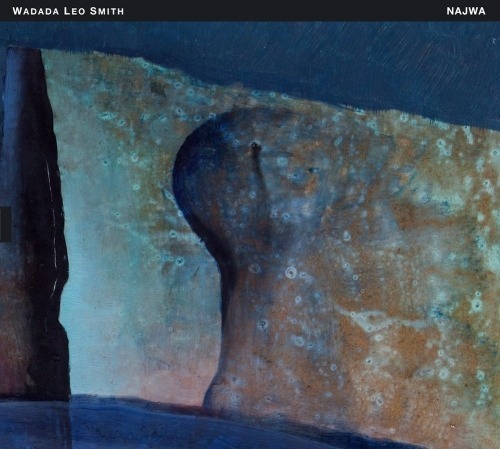
44. Wadada Leo Smith – Najwa/solo reflections on Monk
Trumpet player Wadada Leo Smith released two great records this year. I am including them together only because I feel that his “Solo reflections on Monk” gives insight to the work on Najwa. Najwa is an ensemble record, with 4 guitars, and most notably to my ears is the bass tone of Bill Laswell. Each piece seems to be a moving tribute to a master of the jazz idiom, from Ornette to Coltrane, and the album explores this devotion in character. The dedications are blistering, joyous harmolodic/spiritual jazz experiences, while the title track feels like a tribute to Miles, a bare amorphous atmosphere, perhaps presenting the trumpeter’s influence as honestly as it can be. What is great about these two albums side by side, is hearing a modern master of the idiom pull new things out of the influences, and show that regardless of the instrument one’s hero played, the content is what inspires, not just the tool.
Favourite tracks: Najwa, Ohnedaruth John Coltrane: The Master of Kosmic Music and His Spirituality in a Love Supreme
Also: Adagio: Monkishness - A Cinematic Vision of Monk Playing Solo Piano

45. Ben Frost - The Centre Cannot Hold
Frost had a fucking busy year, with a bunch of EPs, TV and film scores, and this full-length album (Edit: I just finished Dark, and if I could find the OST album I would be rating that in my top 20, it’s phenomenal). The Centre Cannot Hold is more of what Frost is known for with his solo works. Dense harsh sound pounded, tenderised, and compressed into musical forms, often forcibly. But Frost’s sensibility as a composer of sound and music doesn’t lack subtlety or musicality, and the production is such high quality that after a few minutes the static and distortion become such natural entities, allowing the listener into the beautiful tones and warm beats tumbling throughout the record.
Favourite Tracks: A Sharp Blow in Passing, All That you Love Will Be Eviscerated.

46. Laraaji - Sun Gong/bring on the sun
These two albums seem to play best as companions. Bring on the Sun is a multifaceted exploration of minimal/ambient ideas using zither and mbra, voices and other sounds, beautifully recorded and performed. Sun gong uses metallic percussion as a drone instrument, and explores similar ground with different tools. Both albums are dense with content and yet easy to absorb, offering a constantly engaging and surprising experience on repeat listens. I actually feel bad that I haven’t spent enough time getting to know every nuance of these two records, as they have so much to offer.
Favourite tracks: Sun Gong No.1, Laraajazzi.

47. Robert Aiki Aubrey Lowe - Levitation Praxis
In a similar vein to Laraaji, Levitation Praxis sees Robert Aiki Aubrey Lowe perform a beautiful series of sounds in a barn full of Harry Bertoia’s sound sculptures. The resonance of metallic forms in such a reverberant space is intoxicating, and Lowe uses his dreamy falsetto voice to commingle in the reverb bringing a warmth and humanity to the cold steel sounds. The presence of the space is felt in the recording, the shuffling of a body through the room, the intuitive nature of the performance, all factors that make listening to this special.

48. Kyle Motl – Transmogrification
A collection of solo double bass improvisations recorded over two days. Motl explores his instrument intimately, pulling sounds from the wood and steel and hair and shaping them into gorgeous careful music. There’s not a lot more to say. The album presents an imaginative and adventurous spirit making abundance with very full tools.
Favourite track: Urrong.
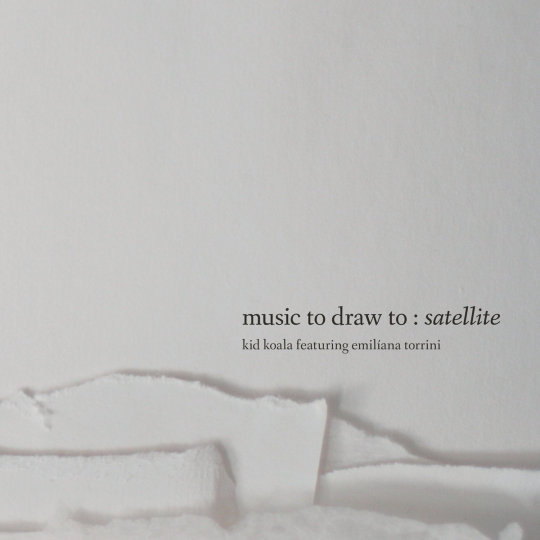
49. Kid Koala (with Emiliana Torini) - Music to draw to: Satellite
Sweet tunes, with a delicate balance of scifi and mellow pop. Emiliana Torrini’s voice is beautiful, and it breaks up the atmospheric instrumentals really nicely. This is some pretty easygoing music, great evening chill out soundtrack stuff.
Favourite tracks: Collapser, Photons.

50. Flaming Lips - Oczy Mlody
The Lips made a trippy as fuck, synth pop record. It’s totally acid, and only those who have the experience will know exactly how perfect it is. The lyrics are totally oldschool tripper lyrics. It’s kinda perfect at this stage in there career to just own that shit. It has some great sounds, and the comfortable nature of the music is constantly shifting, and gets a bit mucky from time to time. Definitely feels like acid to me.
Favourite tracks: There should be unicorns, Listening to the frogs with demon eyes
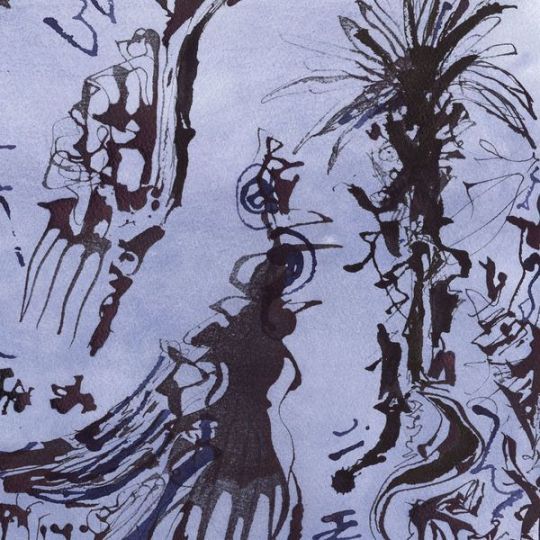
51. Shackleton and Anika - Behind the Glass
This goes here on the list because it’s so incredibly similar to Shackleton’s other record with Vengence Tenfold, and although it’s just as good, I felt two albums like this in one year wasn’t fair to put them so close together. Proves how pointless this rating system is. Anika’s voice and words are cool as fuck, and the sounds, production, and arrangments are hypnotic. Enjoy.
Favourite track: The Future Is Hurt / Dirt and Fields
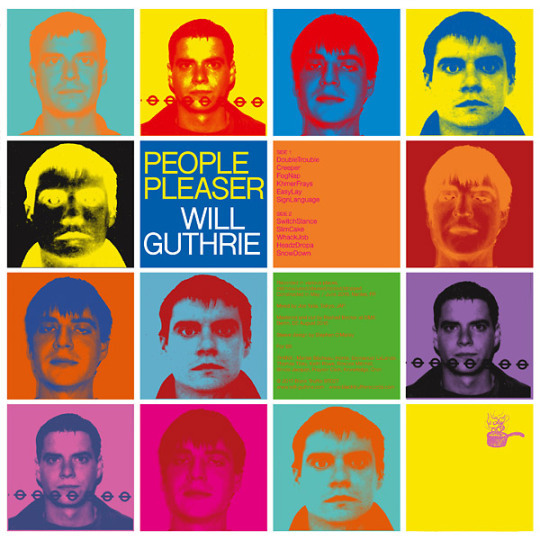
52. Will Guthrie - People Pleaser
This is another great album that I heard for the first time as a live performance. Will has amassed an odd bunch of sounds/samples and collaged them into something quite abstract to accompany his percussion and drums. It’s quite a mission. It has a punk quality to it, sounds a bit DIY and noisy, and I love it for that. Unfortunately I’ve only got it on vinyl and have paid no attention to the track transitions. Just check it out.

53. Robert Aiki Aubrey Lowe - Kulthan/Marlek
Two very cool modular synth albums, that are both 2 long tracks that explore very simple repetition/minimal ideas, probably each a single synth patch. Lowe has been doing a fair bit of this lately and I’m really enjoying it. It’s not super ground breaking, it’s just cool music. Lowe uses his voice as a subtle element in there with the machine which really elevates the sounds to a higher level, and gives the music a mystical feel.
Favourite track: Magnamite
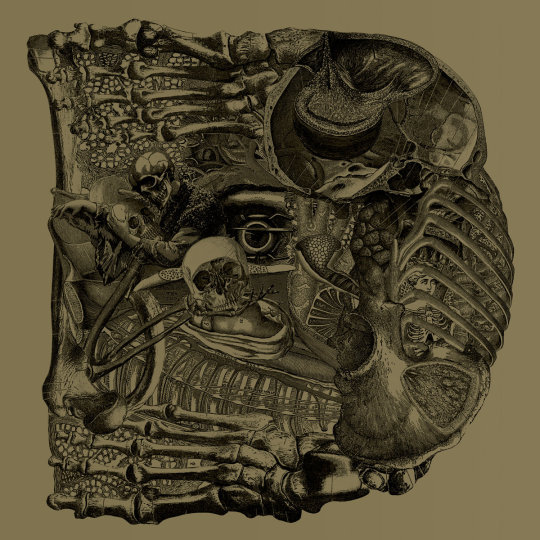
54. Boris - Dear
Boris return with massive drums and some dense as fuck doom. I think my favourite thing about this band is the way the simple pounding weigh of the band is juxtaposed against the vocals, which are, for lack of a better word, beautiful and clean against the heavy tones.
Favourite songs: Deadsong, Kagero
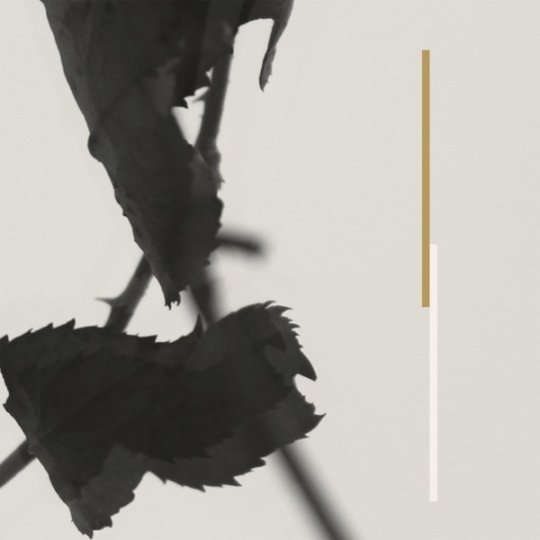
55. kara-lis coverdale - grafts
Grafts is a single 22 minute track. It would seem that it is made up of a whole bunch of simple little loops, grafted together. I’m not really sure if that’s the idea or not, but it makes sense. The sounds are gorgeous, and the piece flows seamlessly. It’s a great work and can be enjoyed repeatedly with much depth to be discovered over multiple listens.
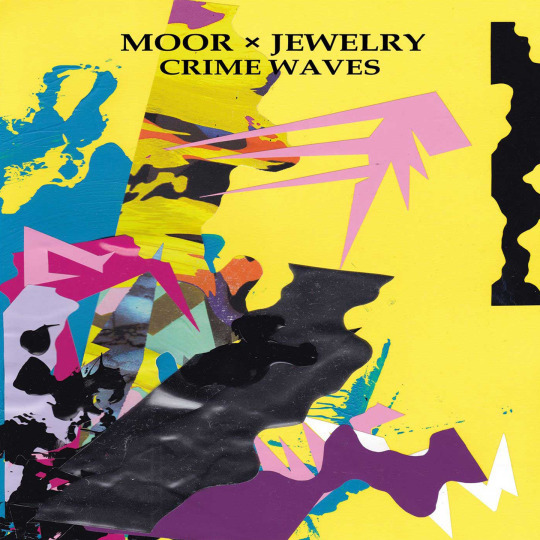
56. Moor Mother X Mental Jewelry - Crime Waves
It’s moody, dark, angry, bold, and it’s gonna fuck with you. The lyrics are heavy. It’s not quite hip hop. It sits more in line with the recent afro-futurist/punk movement. I love it. I saw Moor Mother Goddess live in January and her shit is the real deal.
Favourite tracks: Death Booming, The City.

57. Nicole Mitchell - Mandorla Awakening II: emerging worlds
This is a psychedelic free jazz odyssey, on the Sun Ra level. It inhabits so many sound worlds, it’s cosmic. The flute is the focus, but it’s full of some amazing percussion and string passages that blur the lines between late 1960s scifi film and gypsy music. It’s kinda hard to pin it down, which is why I love it so much. Great music in the car. So much happening.
Favourite tracks: Egoes War, Forestwall Timewalk, Staircase Struggle.
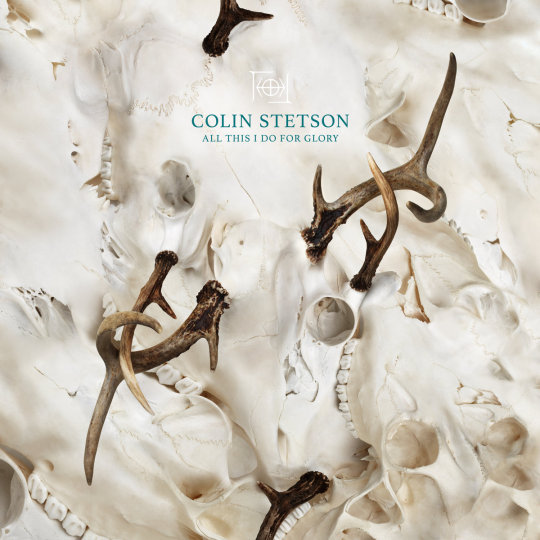
58. Colin Stetson: all this I do for glory
I love Colin Stetson. Every year he tries something new. This album opens with a cool little beat based track, which caught me off guard, and the beats/percussion continues throughout as a feature of the record.. His sax tone is still dirty as fuck, but no longer the only focus. I love the way he has tried some vocal things on here, which sometimes sounds like he’s singing while playing the sax (I wouldn’t be surprised) and the percussion stuff is very cool. Tracks still fall into the classic Stetson, repetitive minimalism/arpeggio word, but it’s still refreshing and surprising.
Favourite tracks: Like Wolves on the Fold, In the Clinches
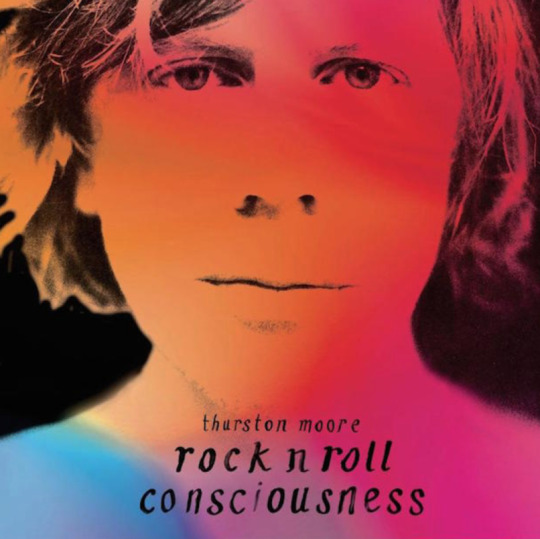
59. Thurston Moore - rock and roll consciousness
I guess what I love about this, its that it takes a bunch of really aggressive and noisy elements, things one usually expects from Thurston Moore, but it uses them as this really positive tool, and explores a really trippy type of happiness. It’s almost summertime, getting high on the beach music. It really caught me by the heart.
Favourite tracks: Turn On, Exalted.
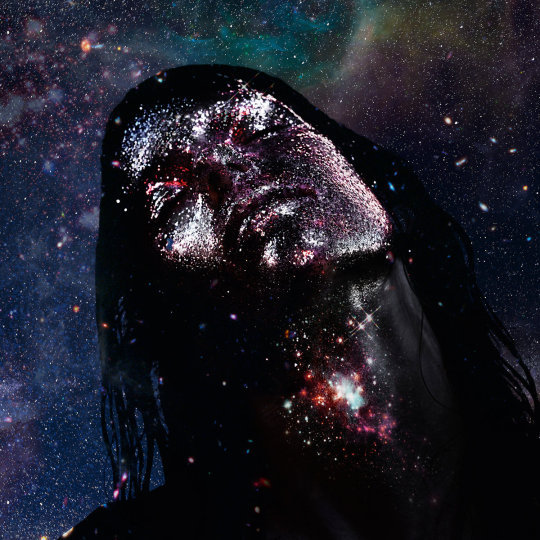
60. Kaitlyin Aurelia Smith - The Kid
What an incredible universe of sound Kaitlyn Aurelia Smith has created. The more I listen to this, the more baffled and in love with it I become. I’m always finding new nuances, and there is a lot of ideas drifting through this record. This album is more focused on the “song” than her earlier works, and there’s a lot more beats and vocal led tracks. The beats are grainy and glitchy, and the vocals are very processed with harmonies from vocoders and such. I like the songs, but I love the synth instrumental bits. Overall, this album is super playful, and colourful, and lots of fun.
Favourite tracks: Who I Am & Why I Am Where I Am, I Am a Thought.
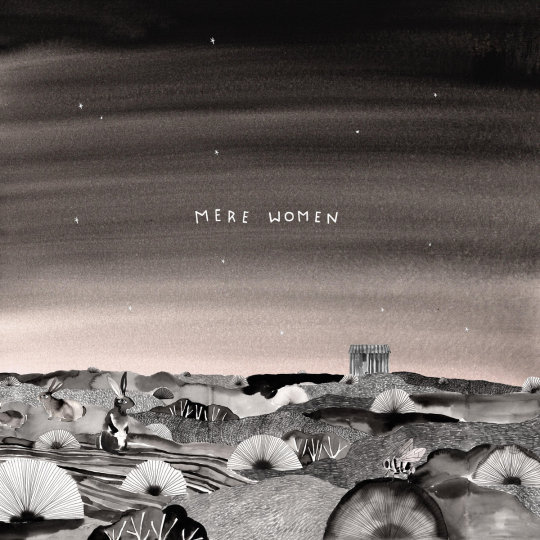
61. Mere Woman – Big Skies
What a fucking great sound. Sydney’s Mere Women have produced an enormous sound, and they have some great beats and lyrics. Ultimately, the guitar sound is what has captured my attention the most, but I’m really excited by the overall package, the consistency of the songwriting and the way each some has a clever, stripped back and focused character. There’s never a generic beat or form.
Favourite songs: Big Skies, Drive.
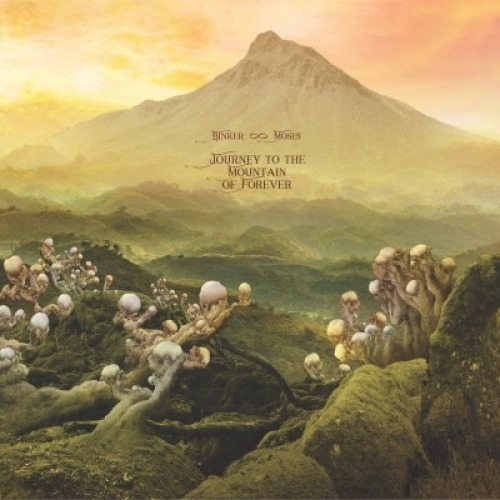
62. Binker and Moses - Journey to the mountain of forever
A fantastic 2 disc set with one album entirely drums and sax duets, and the second disc augmented by some additional saxes and drums, trumpet, harp, and tabla. It’s the perect background music for art making, and that’s how I usually listen to it. Disc two is the shit!
Favourite tracks: The Shaman's Chant, Valley of the Ultra Blacks.

63. Nadia Sirota – Tessellatum
Nadia writes such epic string arrangements, I can’t even tell what instruments I’m hearing after a while. It’s an exploration of drone and rhythm, but it feels super fresh, and it avoids a lot of minimalist clichés while still seeming canon.
It’s a deep listening, immersive, durational work, and as such, it needs to be listened to in full, perhaps a few times, to really be appreciated. Totally worth the time.
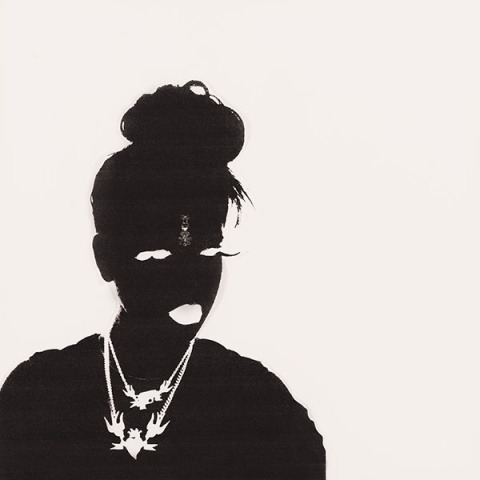
64. Ecca Vandal – Ecca Vandal
Feels like the most mainstream thing on my list is a DIY local who brings the party and the fight on her debut record. It’s probably the best pop record of the year, and one of the best local releases in years. Ecca is a phenomenal performer and a great songwriter. Her team, the band and collaborators, have really made something fresh, mashing a lot of different genres together, and making if work. The best thing is how courageously heavy and out there the riffs are.
Favourite tracks: Price of Living, Future Heroine, End of Time.

65. Actress - AZD
Beginning with some totally cool blippy synth bits, AZD takes its sweet arse time building up into the masterful dance album it is. Once it does, each cut is just as perfect as the next. This is the perfect music for late night house party dancing.
Favourite tracks: Fantasynth, X22RME, Falling Rizlas.

66. The Necks - Unfold
Four nice long tracks, each with a different mood to explore. The Necks are masters of the long unchanging, durational improvised sound world. On this album, the focus is less on groove and more of texture, and the organ plays a central role in the first two pieces, giving this a kind of spiritual, 1960s, Terry Riley/Alice Coltrane kind of vibe. The percussion takes more of the lead on the last track which is more rhythmic, but still not really a groove. Great stuff for sure.
Favourite tracks: Overhear, Timepiece.
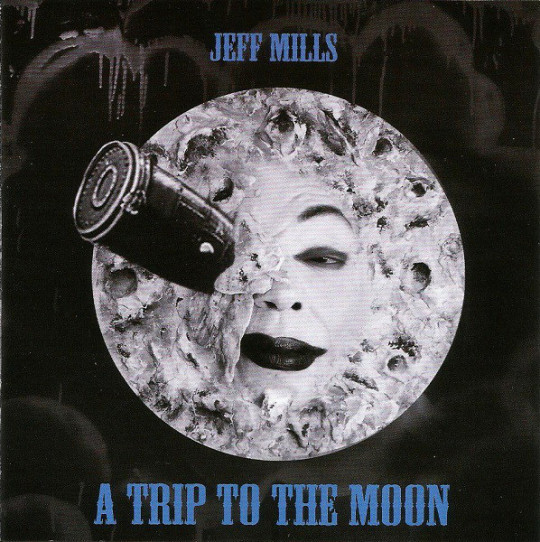
67. Jeff Mills - Trip to the Moon
Jeff Mills scored the old 1902 silent film, A Trip to the Moon, using beautiful synthesisers and playing with all the oldschool scifi tropes, reworking it into a delicate collage of music and soundscapes. What’s great as a listening experience is that the transitions that would no doubt seem obvious with the film, create surprising forms in a purely musical realm. Very cool stuff.
Favourite tracks: Rocket Spaceship Destination, Outer Space, Bewilded, But Not Confused

68. Lau Nau – Poseidon
Finnish artist Lau Nau has a dreamy and delicate sound, but it avoids being overly twee and meh with some lush arrangements and her cool, lazy vocal style. I’m a fan of the string sound on this record, and the subtle fx processing/electronic textures, which totally fly under the radar, but serve to really enhance the mood. Occasionally things get a bit more outrageous, and bizarre, and it adds t the overall adventure of the record.
Favourite tracks: Unessa, Suojaa uni meitä, Kun lyhdyt illalla sytytetään, ne eivät sammu koskaan
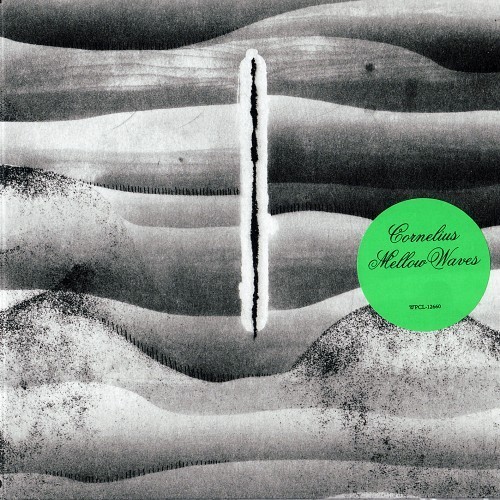
69. Cornelius - Mellow Waves
I love Cornelius, and it has been so long since he released anything, so this had me super excited. Point was a life changing record, and the follow up, Sensuous, was good, and mellow Waves is still pretty good, although I feel like Cornelius has a thing he does and it’s pretty clear now that that isn’t about to change much. Mellow Waves is more cool Cornelius tracks, lots of sudden blips and shifts in reverb, lots of polyrhythms and noisy guitar solos. Quaint and sophisticated yet also kind of raucous. I can’t help but feel he does this sort of thing in his sleep, but it’s still good music.
Favourite track: Sometime/Someplace.
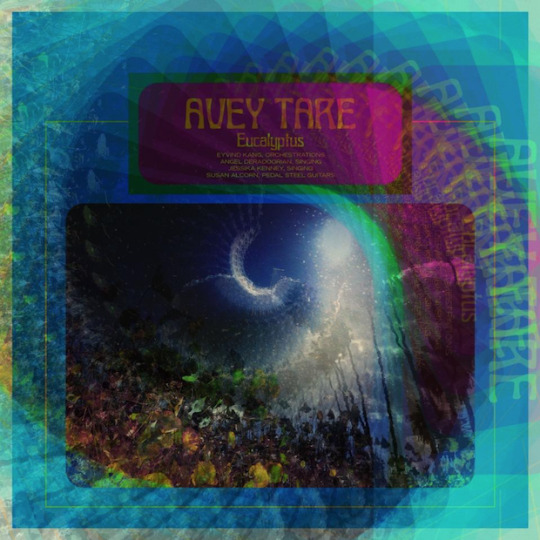
70. Avey Tare - Eucalyptus
I like this so much better than Slasher Flicks, and the recent Animal Collective Painting with… Avey has developed a really interesting bunch of ideas, ranging from loose psychedelic meanderings, to straight up pop folk tunes, all built around voice and acoustic guitar, and punctuated by strange arrangements of sounds, worked on in collaboration with the genius Eyvind Kang. It’s relaxed and ambitious at the same time. A curiosity of sorts, with lots of depth.
Favourite tracks: Ms. Secret, Selection of a Place, Coral Lords.

71. Black Cube Marriage - Astral Cube
Chicago instrumentalist Rob Mazurek leads this ensemble of improvisers and sound adventurers. The results take on many forms, with shifting and cascading textures and rhythms bursting with noise and all manner of avant shit on display. It’s a little bit chaotic, but it represents masters of their art doing what they do best.
Favourite track: Syncretic Illumine
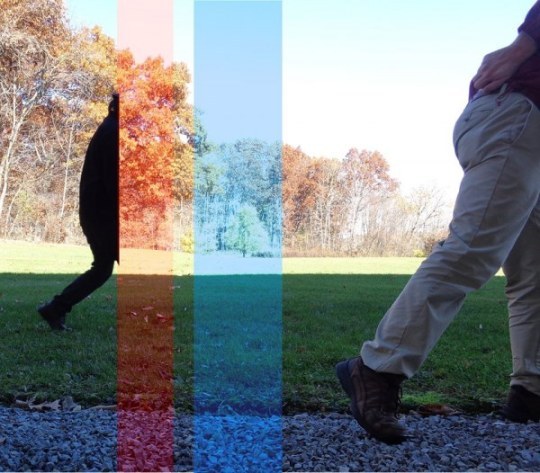
72. Graham Lambkin & Taku Unami - The Whistler
Well, I mean, what even is this? On the surface the record comes across as nothing more than a bunch of random recordings. Maybe that’s what it is. Stuff is happening, it has been recorded, and it’s really fascinating to listen to. The first disc sounds like someone in a workshop, occasionally whistling while they work. Disc 2, titled Small Mistakes In Nature has instruments being played at times, and the sounds of the outside world, and really flows on into bizarre headspace of where the hell am I and why? To be honest, this is an acquired taste and sometimes a frustrating listen, but it’s something I like, so…

73. Brooklyn Raga Massive – Terry Riley in C
I’ll begin by saying, I love Terry Riley and I love In C, so this was an easy win. Traditional Indian classical instruments playing an amazing piece of western music, that itself was inspired by Indian classical traditions. It works, and it’s a fucking awesome version of the piece. Just do it.
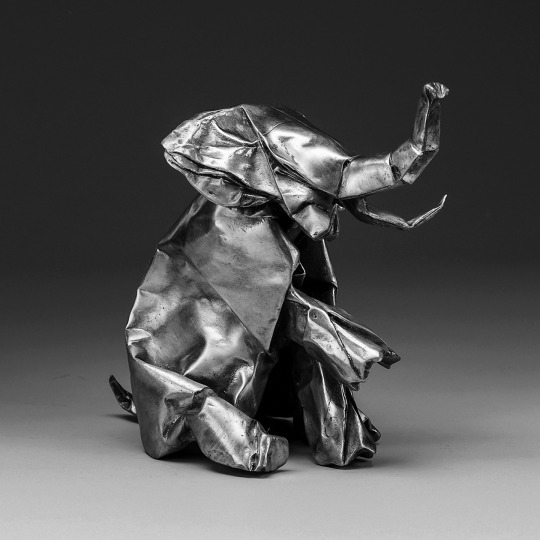
74. Jlin - black origami
Curiously, it took me a while to get into this. Something about the sound is too clean, and I couldn’t quite get into it. But after a few tries, it got me hooked. I think what I dig is the types of patterns and the choices made in terms of percussion sounds and vocal textures. It has such a cool feel and great movement, but it’s abstract enough to ponder and delve into with the ears as well as the body. I saw Jlin a couple of times live recently, and it translated so well that the album got back on my radar.
Favourite tracks: Enigma, Nyakinyua Rise.
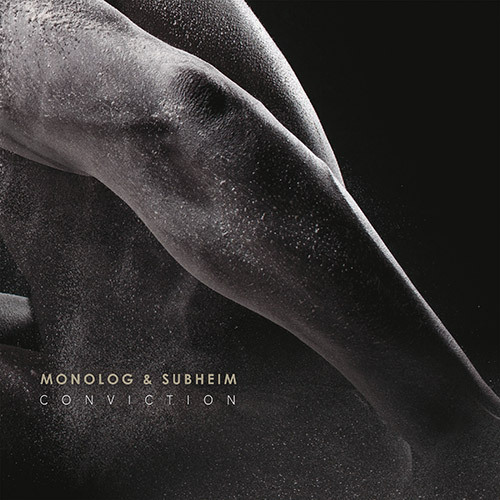
75. SUBHEIM & MONOLOG - Conviction
A very cool dark, downtempo mix of drones and throbbing beats. With lots of space, some lush guitar, and plenty of swelling dynamics. Not much to say about it, it’s simple and tidy, and calculated.
Favourite track: Wone
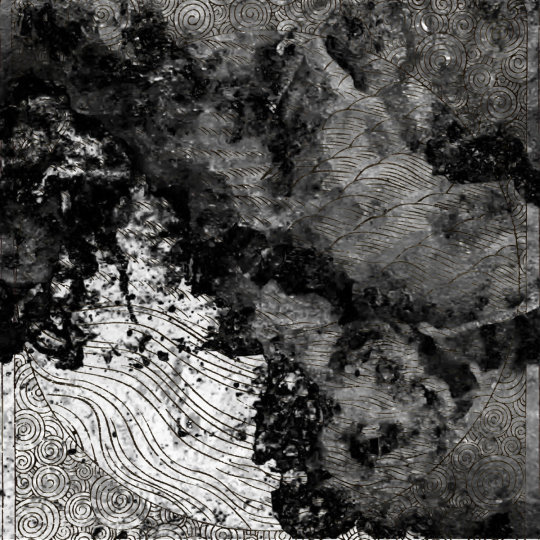
76. Erin K Taylor - Source
Source is 1 track, almost an hour in length. Centered around a field recording, with bird calls and a trickling stream, and the very distance sounds of traffic. After a while it sounds like other sounds are being subtly added into the mix, but I’m unsure how much this is edited/constructed, and how much is just captured. Eventually, there’s some vocals, and the planning and artistry is revealed. This is a deep listening album and really requires patience and attention. It has some surprised buried in there, that will reward you for your time.

77. Pan Daijing - Lack
Maybe this could have made it higher on the list. Listening back again now, it is so much more interesting than I remember. The voice seems to be the central connecting element of the work, and Pan Daijing constructs a variety of abstract forms, punctuated by noise and synth, and a mix of acoustic instruments (what sounds like dulcimer on the opening track). All very cool stuff.
Favourite track: A Loving Tongue

78. Smakos - A Vampire goes west
Synth based instrumental music, all very atmospheric and cool, with what seems like a strange narrative throughout. The sound is a bit distant, with a sweet little reverb to it, and it plays on the nostalgia a bit with the blippy arpeggios floating through the tracks. Very cool use of sampled voices in the background too.
Favourite tracks: One Day We Will Trip Out From Star To Star, Picnic In A Multiverse Cassette.
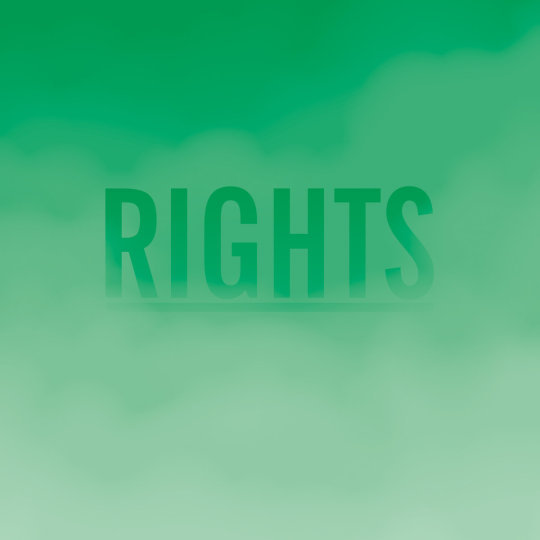
79. Schnellertollermeier - Rights
Minimal math rock type stuff. The first track caught my attention by barely doing anything for the first minute and a half. But then things develop, and grow and the patterns are fun. It takes a while, but gets pretty heavy. Each track follows a similar formula, building up from a simple polyrhythmic idea, but they are cool ideas.
Favourite track: Round
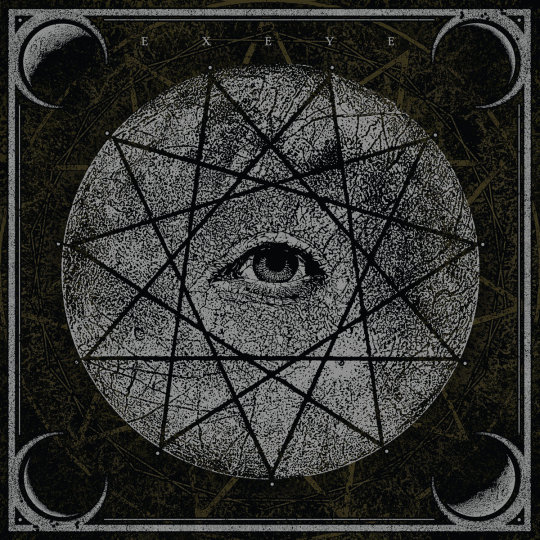
80. Ex Eye - Ex Eye
Colin Stetson teams up with Shahzad Ismaily, Greg Fox, and Toby Summerfield to make a kind of Baritone sax centered (for lack of a better word) metal album. It’s heavy and chaotic and mixes up the genre elements in a fresh way. Nice to hear more sax in heavy music. This album takes some risks and it pays off.
Favourite track: Opposition/Perihelion; The Coil
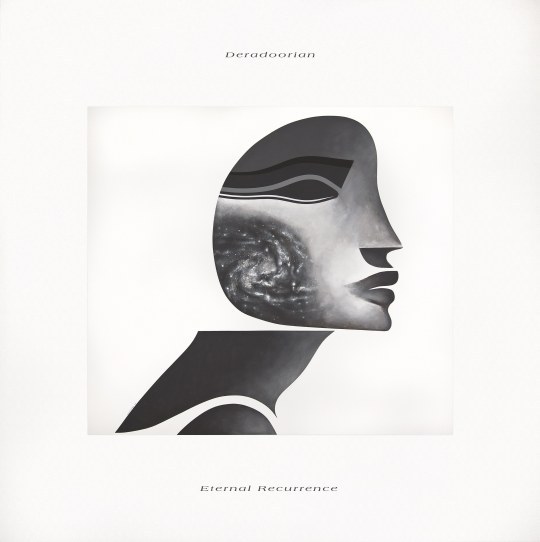
81. Deradoorian – Eternal Recurrence
Stripped back and mellow, moody, lush, emotionally rich and dynamic. All this and more, Angel Deradoorian has made some beautiful and thoughtful tracks. I often get lots in this record, and just let it play on repeat because it’s a bit short, and it’s really hypnotic. Aptly titled I guess.
Favourite tracks: Return-Transcend, Ausar Temple
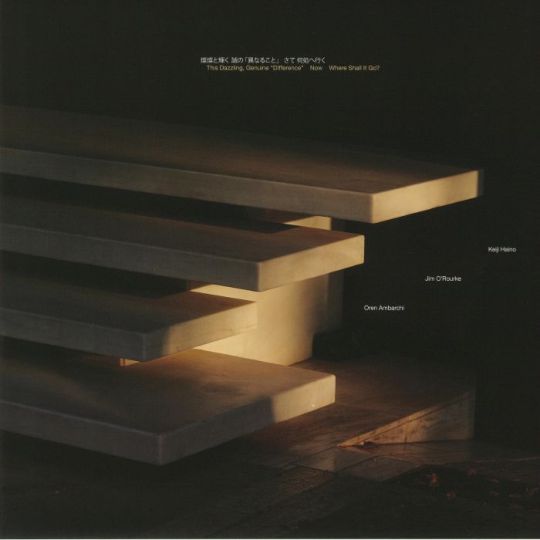
82. Keiji Haino, Jim O’Rourke, Oren Ambarchi – This Dazzling Genuine “Difference” Now Where Shall It Go
More pounding noise, guitar and drum improv, from three fucking legends of the game. It’s wild and full of energy and never really lets up. Keiji Haino has been mad busy with these kinds of collab albums of late, and somehow, they’re all winners. Check it out if you’re into this sort of thing.
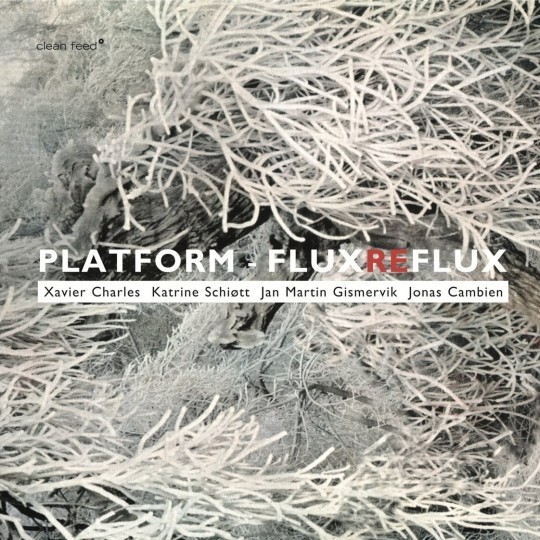
83. Platform - Flux Reflux
An album of avant garde improvisation, with some incredible sounds and textures. Platform seem like a pretty hip group, and they craft a bunch of really cool, diverse pieces.
Favourite Track: Reflux

84. Tyshawn Sorey - Verisimilitude
Moody, dark and slow, atonal and pointalistic modern jazz type stuff. Led by Percussionist Tyshawn Sorey, and with some amazing piano playing by Cory Smythe, Verisimilitude offers a lot of very creative and interlectual approaches to new music, crossing over the contemporary classical avant garde and free jazz worlds seamlessly.
Favourite track: Obsidian
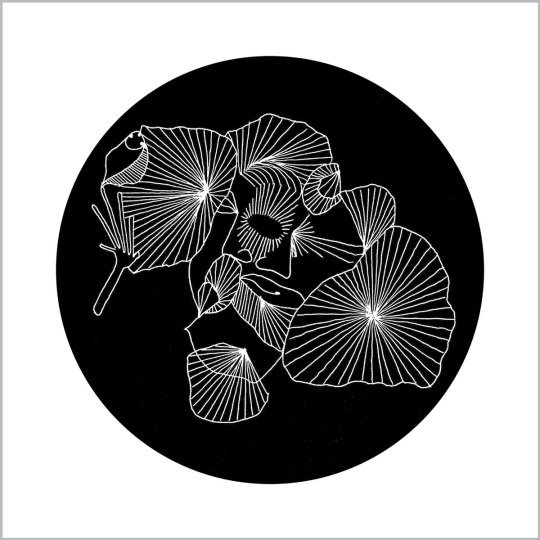
85. Matt Nelson, Tim Dahl, Nick Podgurski - GRID
Four tracks of screeching bass guitar, sax, and drum interplay. It’s noisy as fuck, and really interestingly constructed. There’s a form of instrumental torture at play, but everything is completely in sync. The group operate as a single unit. Destroying everything with blissful abandon.
Favourite track: (-/+)

86. Trio Heinz Herbert - The Willisau Concert
A live improvised album of electronics, drums, and guitar, some of the most beautiful sounds I’ve ever heard. It moves between abstract and odd to pulse driven and musical in waves of expressive brilliance.
Favourite track: Fragment Z / Brugguda

87. Bérangère Maximin - Frozen Refrains
Aptly titled, Frozen refrains could well be just that, a small collection of time stretched moments. But it’s a lot more, and it takes a little patience to delve into. It really teases you, and makes you wait, but the detail in the sound design and in the micro forms of the long seemingly unchanging sound scapes are rich and exciting once you really listen.
Favourite tracks: Burn and Return, Clash.
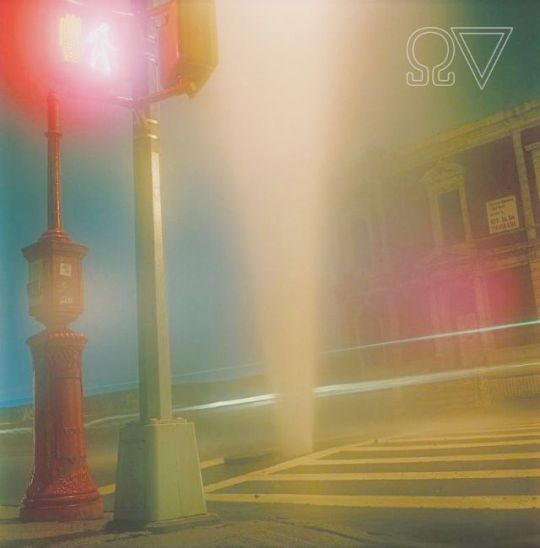
88. Ohmslice - Conduit
This album is a mishmash of bizarre processed percussion, synthesiser, and abstract/surreal poetry, with some crazy guitar and horns in there for some bizarre accompaniment. It’s actually really compelling, and the words make it seem all the more interesting.
Favourite tracks: Crying On a Train, Broken Phase Candy, Paint By Numbered Day
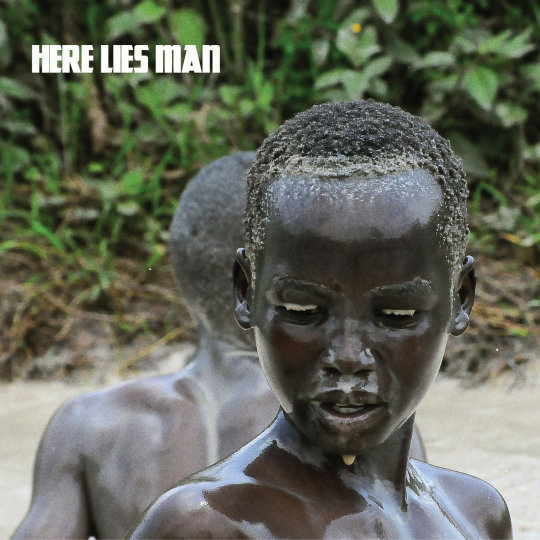
89. Here Lies Man – Here Lies Man
This review is a cop out, (this is where I tapped out of writing in general) but… This is a dirty psychedelic rock/afrobeat cross over record, and it is pretty cool. I enjoyed it a bunch of times, not much more to say.
Favourite tracks: I stand alone, Belt of the sun

90. Perera Elsewhere - All Of this
Dark moody beats and singing. I liked it a lot. Something kinda post triphop, downtempo type music with cool modern production ideas. Definitely worth a few listens.
Favourite track: Girl from Monotronica

91. Locust Toybox - Drownscapes
David Firth of Salad Fingers fame has always made music under this moniker, but this is the first in a while, and usually his music is kind of broken beat type stuff. This is a lush dreamy ambient album, and it’s totally gorgeous.
Favourite tracks: Return To The Meadow, Birthday Lungs
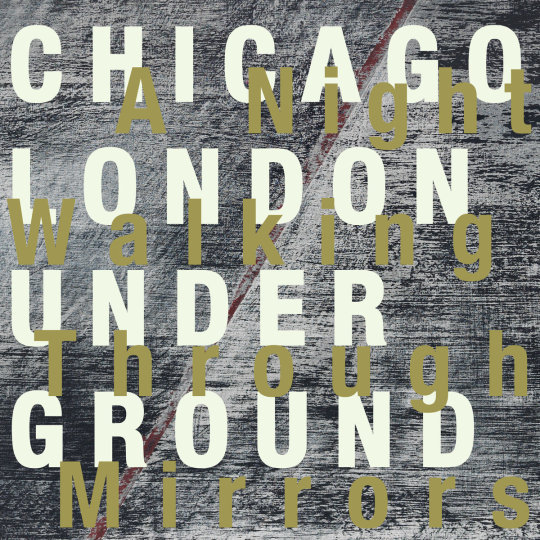
92. Chicago/London Underground - A Night Walking Through Mirrors
An excellent live free jazz album that I spent quite a lot of time with in the first half of 2017. Beautiful sounds and textures, great players. Put it on at night.
Favourite tracks: Something Must Happen
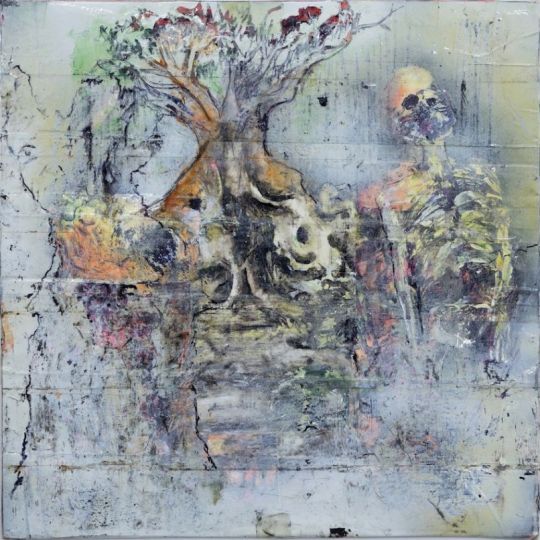
93. Wolf Eyes - Undertow
Abstract and noisy, with cool spoken word bits. I was a bit surprised by this one. It’s trippy and dark, which I like.
Favourite tracks: Undertow, Thirteen
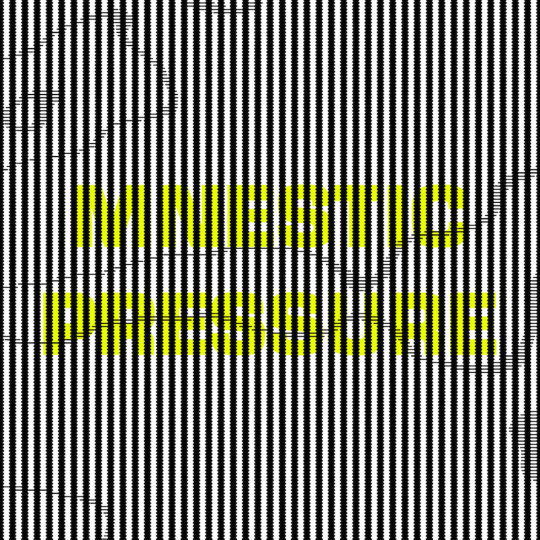
94. Lee Gamble - Mnestic Pressure
This is just some cool electronic music that I enjoyed. It’s not solely focused on beats, and that makes me happy.
Favourite tracks: Istian, East Sedducke

95. Tomutonttu – Kevätjuhla
Cool and exotic sounding electronica. Beautiful sounds full of curious charm and otherworldliness.
Favourite tracks: Kuteen valoon I - Lukin jalka, Operaatio satamassa

96. Juilia Bloop - Roland Throop
Cool loops and beats, amounting to some excellent atmospheric oldschool sampler music. Very chill and yet very clever.
Favourite tracks: Too Many Ghosts, Let’s have some music
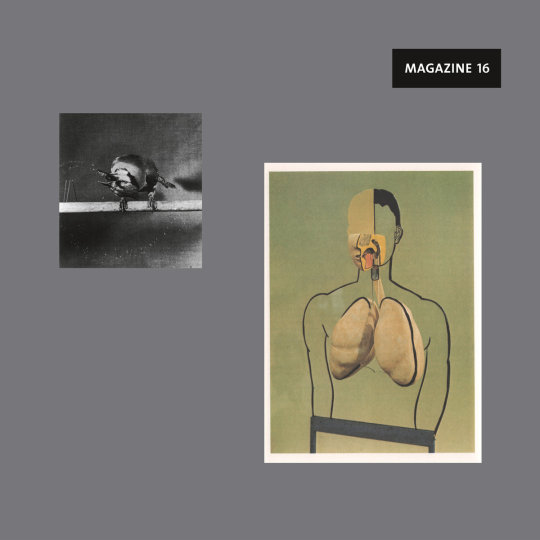
97. Cologne Tape – Welt
A really eclectic and exciting mishmash of ideas and instruments on this one. Moves from blippy electronic experiments to bombastic drum focused stuff but always with subtlety and an atmospheric quality.
Favourite tracks: Welt 2, Welt 4, Welt 8.
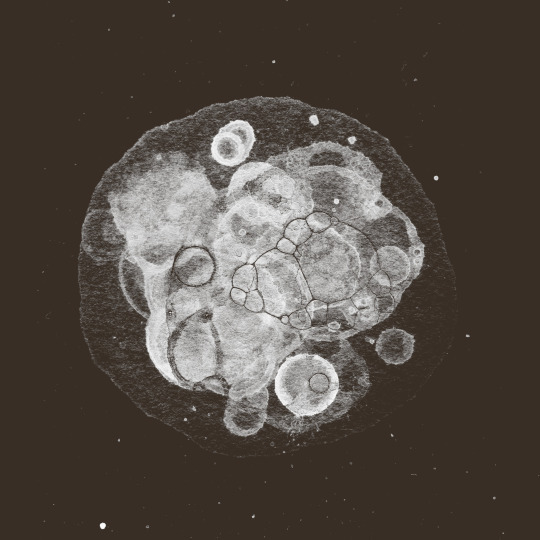
98. Rafael Toral - Moon Field
This is a brilliant electronic/scifi style soundscape album. It’s a weird and beautiful combination of sound design/fx and abstracted music ideas.
Favourite track: The Stars

99. Bellows - Sander
Beautiful and sweet tape loops and synth patterns. It’s really simple and sophisticated.
Favourite tracks: Untitled #2

100. Do Make Say Think - Stubborn Persistent Illusions
A really good collection of ideas in a genre that doesn’t often have any. I enjoyed this a lot.
Favourite tracks: Bound, And Boundless, As far As The Eye Can See.
Honourable mentions.
There were a whole bunch of albums I enjoyed that didn’t technically fit the list, compilations, and a few EPs, all great but not right for a full length album list. I also left off a bunch of things that I thought were great, but I just didn’t have time to delve into it all. I wish I had’ve had more time with a bunch of albums.
That all said, these two albums deserve a mention, but not in the top 100 because both these albums were recorded in 1975, and only released in 2017. They both show innovative legends doing their respective things as well as can be expected, and are both gorgeous listening experiences. Neither needs more detail than that.
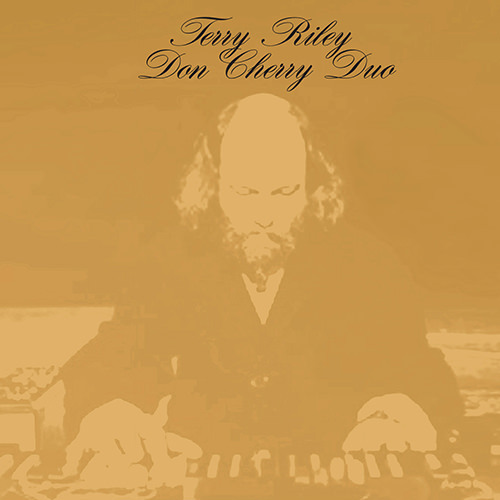
Terry Riley & Don Cherry Duo - Live 1975
Organ minimalism and trumpet improvisations, a meeting of two legends, a conversation through the medium of music.

Suzanne Ciani - Buchla Concerts 1975
Ciani demonstrates the potential of the Buchla synth, in all its glory. What more do you need.
2 notes
·
View notes
Text
Katy Kirby Live Preview + Interview: 3/11, YouTube

Photo by Jackie Lee Young
BY JORDAN MAINZER
From growing up singing in church in Texas to dissecting everyday life with the precision of a travel writer, Katy Kirby’s journey has brought her to what should be a breakout year. Her debut album Cool Dry Place, released last month via Austin-based indie rock label Keeled Scales, is a concise collection of minimal songs that still manage to punch you in the gut. With an unassuming coo and wiry guitar playing, Kirby certainly covers a range of topics, from privilege to motherhood to toxic masculinity, but her songs about relationships hit the hardest. “Tap Twice”, released almost a year ago before Cool Dry Place was even announced, is a standout, detailing a person’s increasingly desperate attempts to reach out to someone else, as the low-key venerable band’s instrumentation also builds up to unhinged clatter. The title track uses similarly autobiographical imagery--that of an orange--as a metaphor for a dissolving relationship. “Ten segments in an orange--only so many ways that you can pull apart someone,” Kirby sings on the penultimate track, the emotional climax before the stunning closer “Fireman”. That one’s about an always distant relationship, Kirby’s sophisticated writing again playing with the album’s established iconography while introducing new metaphors: “We’re a slow burn kind of love / but now the whole house smells like smoke,” she sings. Intentional or happy accident, for a first record, it’s connections like this that have already positioned Kirby as one of the best new songwriters in recent memory.
Recently, Kirby was in Alabama helping a friend produce his first record, as she and some other musicians, after quarantining and getting tested for COVID-19, moved for a month to a friend’s family ranch and farm. It was there that they chugged out a live version of Cool Dry Place, front to back, that they’re debuting tomorrow night on YouTube at 7 PM CST. (I’ve embedded the YouTube video link at the bottom of this interview.) I spoke to her last Friday over the phone about the inspiration behind many of the songs on the record. Read our conversation below, edited for length and clarity.
Since I Left You: Where do you live these days?
Katy Kirby: That’s a great question. Technically, I’m living in Texas at home with my parents. I was in Nashville before that, and I’m trying to figure out where to go next.
SILY: In various iterations, whether via this record’s singles or the Juniper EP you put out, about half of the songs on the record were released before the album came out. In context, all together, what are you trying to communicate with the record?
KK: Honestly, I’m trying to communicate that I’m a good artist. [laughs] I don’t know if I can honestly say that I had a unifying concept in mind. Someone pointed out to me recently that a lot of the songs on the record seem like they’re identifying a minor disfunction in a relationship that hasn’t quite made something go wrong yet. I don’t know if that’s true exactly, but maybe minor disfunctions in close relationships is the unifying theme.
SILY: That reminds me of the song “Portals”, which is about the end of a relationship, but it’s ambiguous whether it’s about you. How do you balance singing and writing autobiographically versus more generically or fictionally?
KK: A very smart songwriter told me to not worry about the divide between biography and fiction because it doesn’t really matter in the context of the song or clarity of the narrative, so long as you’re able to get people from one line to the next. I allow myself to fictionalize autobiographical events to make the situation clearer, if that makes sense.
SILY: To clarify it to you as much as to the listener.
KK: Exactly. Clarifying fiction or hysterical realism. It makes things a lot clearer when I’m looking back on the events I’m sort of writing about. I feel like a lot of very smart writers or people I’ve listened to have said you’re always writing about yourself no matter what you’re writing about. In that way, fiction doesn’t super feel like fiction.
SILY: On “Juniper”, a song about motherhood, you sing about not learning the difference between “lightning, rain, and thunder” and between “herbs, weeds, and flowers.” The difference in the former group is more obvious, whereas the difference in the latter group is more ambiguous. Were you trying to approach different levels of ambiguity? Are these differences metaphors for something else?
KK: Kind of...I never noticed how different those are. I think that those lines in “Juniper” are sort of about the gaps in, I want to say relational skill, but that sounds a bit too clinical. Ways of loving people you happen to be bad at or you don’t feel were ever clarified for you in a sort of missing piece way. Sometimes, those skills or differences can be really subtle, like identifying toxic and non-toxic plants, where it’s tricky and even experts fail at it. Sometimes, the skills and knowledge that’s lacking is horribly obvious and debilitating in how basic it is.
There used two be two other refrains in the song that got dropped. One was “waves, surf, and water,” in a verse that’s no longer in the song, which feels like “weeds, herbs, and flowers,” and there was one I would always end on, which felt too intense, which was, “bruises, burns, and fractures,” obviously all very different. The pattern you mentioned happens in parts of the songs no longer there...four verses seem like too many.
SILY: There are a couple moments on the record where the relationship between how you treat your voice and what you’re saying stands out: the auto-tune on “Traffic!” and on “Tap Twice” when you sing, “I almost broke my wrists trying to bring you back,” when the effects come in. Can you talk about those moments and the interplay between vocal effects and what you’re singing?
KK: In “Traffic!” that was sort of a happy accident. We had the auto-tune on there when demoing because my voice was really tired and I had a cold. The way that the auto-tune sounded felt like it brought more than a wink at some sort artificiality that I wanted “Traffic!” to have simmer throughout it. We kept it there and then decided to have the auto-tune weave in and out throughout the lyrics; it shows up and goes away and comes back again at varying levels. I can’t remember exactly where we placed that, but we were just trying to underline some of the more direct or earnest lines in the song by letting the vocal be a little bit dryer.
The part in “Tap Twice”, it’s distorted, right?
SILY: Yeah, and the instrumentation climaxes.
KK: It felt right to feel the most unstable at that line in the song. The narrator of that song feels like they’ve restrained themselves pretty well up to that point, where they’ve only been interacting with the other person through Instagram, or taps on the window, or oranges as an offering. At that moment in the song, I wanted it to sound like they were losing their grip the tiniest bit. It maybe makes the line “thrashing around like goldfish in a garbage bag” make a bit more sense.
SILY: I love how the drums in the song initially sound like window taps.
KK: That never occurred to me.
SILY: Also, your use of orange the fruit and orange the color, of goldfish, and you use oranges as a metaphor in the title track.
KK: Someone else pointed out that there are two mentions of grapes. A lot of fruit on the record. I didn’t notice that until we were done with that. I feel a little weird about it since I feel like fruit as iconography is a little bit trendy right now. Is that Petra Collins’ fault? Who’s in charge of this?
Quite honestly, the mention of oranges in both of those songs is not symbolic at all. I really did leave oranges for my friend Tom when he was sick and in a college kid broke place where he hadn’t eaten a piece of fruit in a week. I brought him some oranges and jotted that down. The “ten segments of an orange” line in “Cool Dry Place” is also autobiographical. The person who I wrote that song about and I were on tour, and I had a big bag of Cuties that I brought along, and I’d peel them and pass the pieces around the car to everyone. Ten is an awkward number to split between four people, and I noticed it was always ten segments.
SILY: The name of the title track and of the album came from a storage warning on a Tylenol package. Was there a moment you can point to where you decided it would be a good title?
KK: I probably jotted that down at some point. I wrote that chorus exactly as it is now. I lived with another songwriter and walked into her room not knowing whether it was good. She and another friend of mine convinced me that it was good and I wrote other verses around it. I think I had a list of 10 things I thought we could call the album, and I sent it out to a bunch of people, and they voted for Cool Dry Place.
SILY: Was “thrashing goldfish” one of them?
KK: There might have been one about goldfish in a garbage bag.
SILY: Is the title track the album’s emotional centerpiece or peak?
KK: Yeah. It is one of the most autobiographical and is one of the songs I wrote most quickly. It feels like it’s pointing directly to the proverbial camera and saying something all the other songs are hinting to or are adjacent to but not saying. Definitely an emotional center, at least whenever I listen to the record.
SILY: “Secret Language” interpolates “Hallelujah”. When was the first time you heard that song, and was it Leonard Cohen’s version?
KK: Ooh, definitely not Leonard Cohen’s version.
SILY: Me neither.
KK: I had no idea Leonard Cohen wrote that song at the time. I don’t know when I found it out. It was much later. Isn’t a version of the song in Shrek?
SILY: Yeah. Rufus Wainwright’s version.
KK: It has to be that, since I definitely watched Shrek as a child. Then, in a high school talent show, a girl in my grade sang a rather American Idol version of “Hallelujah”. Like, kind of the Jeff Buckley version, but instead of the words Leonard Cohen wrote, it was more about Jesus. It was a worship song. That is a thing I will never forget. I don’t think I heard the Leonard Cohen version until 2018.
SILY: It’s weird, because you’re used to it being a vocal showcase, and then you hear this old guy grumbling it, and it’s so schmaltzy and 80′s.
KK: It’s got to be a testament to Jeff Buckley’s ear, or whoever was first like, “This song is actually somber and beautiful and heartbreaking” had a crazy brain.
SILY: What was it like working with Carl Saff to master the record?
KK: I have never talked to him or met him in person, but he’s unbelievably pleasant and insanely good at his job. Hire Carl Saff if you’re thinking of doing so. 10/10 would recommend.

SILY: What’s the story behind the cover art?
KK: Not much. We tried a few different ideas for album art and were talking to an illustrator that fell through. There were a few iconography-based ideas that I was thinking about. I didn’t want to have my face on a debut record. It felt corny to me. But that picture came out sort of weird and interesting, and I was gently encouraged by wiser and more experienced parties to, maybe, get over it and feel okay about introducing myself as an image or a person on the debut record.
SILY: You collaborated with another Keeled Scales artist, Karima Walker, on an EP. What was that like?
KK: We wound up doing this EP together for this tiny record label in Spain. The nature of the project is that we didn’t know each other and they put us together in a horse farm in the west of Spain somewhere and had us write and record an EP. She’s incredibly smart and lovely and I’m super glad Keeled Scales is putting her stuff out. Waking the Dreaming Body is super good.
SILY: What does it mean to you to be working with a label like Keeled Scales?
KK: I’m so freaking grateful. I had a relationship with them for a couple years before I signed with them, and they’ve proven themselves to be good people for a while. They did a really good job putting this record out, and I can’t believe it went this well. Also, I fucking love Buck Meek. I think he’s the best, and I’m freaking out he’s on the same label.
SILY: Have you been working on anything lately?
KK: Not as much as I would like, but I’ve been writing enough to still call myself a songwriter, and that’s all I can ask for.
SILY: Anything you’ve been listening to, watching, or reading lately that’s caught your attention?
KK: I just finished a collection of short stories by Emma Cline called Daddy. It’s so fucking good. I’ve been listening to the Lomelda record [Hannah] nonstop since it came out. It’s a very special album. That’s the thing that’s been saving my sanity the most.
youtube
#live picks#interviews#katy kirby#keeled scales#carl saff#youtube#jackie lee young#cool dry place#covid-19#juniper#petra collins#leonard cohen#shrek#rufus wainwright#jeff buckley#jesus christ#jesus#karima walker#waking the dreaming body#buck meek#emma cline#daddy#lomelda#hannah
0 notes
Text
December Spotlight: To Show and to Tell
by Lisa Hiton

My birthday is July 4th. A celebratory day in the USA, filled with fireworks, parades, and family BBQs. And since my birth, every year on July 3rd, my mom sits with me and tells the story of how I chose my own birthday as we look through a photo album from that time. It was clear to the doctors that my mom would likely need a C-section, as I would weigh in at 10lbs 4oz, but being my mom’s firstborn, she didn’t want to choose my birthday. Nearly ten days past her due date, it might surprise you that she swiftly attributed a “stomach ache” to a pie she’d eaten at a July 3rd party...
Thirty years later, she still tells me the story of how I chose my birthday—how she missed the fireworks that year, and how firework displays now hold so much symbolism for both of us. And she shows me the photos—my lithe mom carrying a huge baby. Though it’s not written on paper, the story feels written—I know the order of events, the timing of the jokes, and how the fireworks have literal and symbolic meanings throughout the telling.
We often think of our first encounters with stories in books. And yet, our lives are writing themselves all along. And if we are lucky, we have great storytellers around us who not only remember the plots and scenes of a life, but can tell them with panache. As writers, we must do that on the page. Especially when we want to make something permanent and beautiful from our own experiences. Personal essays take these parts of our lives and weave them into something artful and literary—helping us make sense of our experiences here on earth.
TO SHOW AND TO TELL
A common phrase used to critique or edit a writer’s work is “show, don’t tell”. For example, if you’re writing about a character who is sad she received a rejection letter from her first-choice college, you might be tempted to write:
“Juniper was devastated to be rejected from NYU.”
Now, at face-value, the sentence isn’t terrible. It’s grammatically correct, well punctuated, and likely true. However, I might suggest to a writer that they “show, don’t tell” the reader about the scene. Instead of telling the reader that Juniper is “devastated”, the writer might instead give the whole anecdote:
“Juniper raced to the mailbox after school. As she grabbed the pile of envelopes, the one letter she wanted sat right on top: a small envelope from NYU. She stared at the school’s crest in the corner, which turned to a blur, as she ripped it open, knowing full-well what it said inside.”
Sure, it’s longer. But this depiction shows the moment of devastation without ever having to state how Juniper feels. When writing personal essays, it’s important to do both of these things. Though you might not want to state outwardly how Juniper feels, you might follow up a scene like this one with some connective tissue that help the reader weave this real-life situation into something a bit more artful. In this sense, to show is to paint the scene, to tell is to confess something to your reader—to draw for the reader connections they might not be able to make outside of the experience of your own life.

AN EARL [OF ESSAYS] AMONG US
Nonfiction is often remarked as the “stepchild of serious literature” by critics and literary snobs alike. Personal essays seem like the antithesis of serious reading and writing: they show and tell, they don’t follow formal rules of structure or narrative arc, and they can sound as colloquial as my mom telling my birth story. But it’s precisely these traits that make writing personal essays so very difficult to write. In order for a reader to feel as though they are sitting with my mom, listening to her tell a funny, heartfelt story about her firstborn child, a lot of work must be done.
Phillip Lopate, director of Columbia University’s creative writing program and one of the most celebrated, living personal essayists of our time has explored this phenomenon deftly in his anthology on personal essays, The Art of The Essay, and his follow-up book on crafting personal essays, To Show and to Tell. In To Show and to Tell, Lopate grapples with the rules and boundaries of essays. As an example, an entire chapter is called “The Essay: Exploration or Argument?”. Especially as we look at different essays, this question can help frame our understanding of the genre. Sometimes, essays make a case for a particular idea or belief. But other times, telling a story can lead the writer astray, to something unplanned. Think about it: even within the world of nonfiction, there are different subsets—biography, autobiography, memoir, personal essay to name a few. And each of these has its own set of goals, rules, and structures. In The Art of the Essay, Lopate paints the core values of the genre for the reader:
The hallmark of the personal essay is intimacy.. The writer seems to be speaking directly in your ear, confiding everything from gossip to wisdom. Through sharing thoughts, memories, desires, complaints, and whimsies, the personal essayist sets up a relationship with the reader, a dialogue—a friendship, if you will, based on identification, understanding, testiness, and companionship.
At the core of the personal essay is the supposition that there is a certain unity to human experience. As Michel de Montaigne, the great innovator and patron saint of personal essayists, put it, “Every man has within himself the entire human condition.” This meant that when he was telling about himself, he was talking, to some degree, about all of us. The personal essay has an implicitly democratic bent, in the value it places on experience rather than status distinctions.
(Lopate, xxiii)
Lopate’s books help writers decipher the work before them and approach each story with both anecdotes and a sense of artful organization. Unlike other genres, personal essays allow us to show and tell—meaning we can give an anecdote and reflect on what has happened. That sense of reflection can allow us to think of our lives and the people in them as we might with a work of fiction. We can, in a personal essay, show what has happened and offer forgiveness, love, compassion, and the like as the narrator is also the writer.

To Show and to Tell: The Craft of Literary Nonfiction by Phillip Lopate: To Show and to Tell weaves Lopate’s trade secrets with anecdotes about teaching writing and life. From turning yourself into a character, to understanding what kind of personal essay you might be writing, this craft book is useful to writers at every level.
The Art of the Personal Essay: An Anthology from the Classical Era to the Present ed by Phillip Lopate: Covering over 400 years of personal essays, Lopate’s anthology brings readers into the lives of Joan Didion, James Baldwin, Gore Vidal, Virginia Woolf, Jorge Luis Borges, F. Scott Fitzgerald, Adrienne Rich, Henry David Thoreau, George Orwell, Samuel Johnson, Plutarch, Ou-Yang Hsiu, Michel De Montaigne, and more. With arrangements by theme and form, readers and writers can begin to see the breadth and depth of this genre across time and nations.
PERSONAL FAVORITES
As far as personal essays go, there are so many I love that it is hard to select just a few. From different writers, to different subjects, there are just so many thoughts and feelings about how we interact with the world around us that I’ve decided to honor a handful of essays available to you online. Here is a mini-anthology of essays to read, with prompts to pair. As you write your own personal essays, think about how these essays mirror their main subjects and characters—how the writer chooses to honor and champion their subject and why.
And so, dear writers, as you go into your own Decembers, remember that every detail, no matter how mundane or extraordinary, is part of our common human experience. And we look forward to reading all about it in the pages to come.
About Lisa
Lisa Hiton is an editorial associate at Write the World. She writes two series on our blog: The Write Place where she comments on life as a writer, and Reading like a Writer where she recommends books about writing in different genres. She’s also the interviews editor of Cosmonauts Avenue and the poetry editor of the Adroit Journal.
2 notes
·
View notes
Text
Lost Under Heaven Interview
Ellery James Roberts & Ebony Hoorn
Photo by Chris Almeida
Lost Under Heaven are the gifted Manchester-based duo comprised of Ebony Hoorn and Ellery James Roberts. Returning with the release of their new album ‘Love Hates What You Become’, the duo has formed a startling and thought-provoking record that follows their 2016 debut, ‘Spiritual Songs for Lovers to Sing’. Shot full of incisive social commentary, ‘Love Hates What You Become’ captures the couple at their most musically raw and visceral. The band wrote the album in Ellery’s native Manchester before traveling to Los Angeles to record with producer John Congleton, known for his Grammy-winning work with St. Vincent, Swans, Explosions in the Sky and Sigur Rós. Accomplished songwriting is at the heart of the creative cauldron for this release as the duo is bubbling and overflowing with enthusiasm. With ‘Love Hates What You Become’, Lost Under Heaven continue to establish themselves as a courageous and innovative band, hungry to create and perform their art with the sole ambition to see how far they can reach across uncharted territory… We talk to the delightful duo about working with John Congleton, performing live and downtime…
TSH: How would you assess your creative partnership in the lead-up to ‘Love Hates What You Become’?
Ellery: The whole process in working together with Ebony has really been like an experimentation and exploration for us both. We’ve come to really know one another so well and we now work in a harmonious way. We understand each other’s strengths and weaknesses really well. Ebony hasn’t really sung before or done anything performance wise musically in any way other than sound apps, so to hear how her voice has grown for this album was really great. We had no expectations and I was continuously surprised and impressed by her growth.
Ebony: I feel like touring really allowed me to find myself and lead more with Lost Under Heaven. I was able to confront what I needed to in order to become a better musician.
TSH: Throughout this record Ebony’s vocals feature more so signalling a shift in your tone and dynamic...
Ebony: Yeah, this was a very pleasing aspect for me. Just to understand both of our places in our creative spaces was really important. We both got to figure out what works best for each other’s voices.
TSH: Ellery, you’ve touched on having a ‘sink or swim feeling’ as you approached this record, however, you now feel a greater sense of freedom and like you have more control...
Ellery: When we started working together the feeling we had in Amsterdam whilst Ebony was still in school was completely conceptually free and there was no form to our work. Over the last year we’ve tried to reclaim our initial ideas of making this a multimedia art project. I guess the easiest way for us to function as a band is to keep it simple but we feel much more boundless than that. We’re working hard on the live show and are thinking much more about the theatricality and visual side of things in general. I feel like this record allowed us to have an opportunity to reaffirm our intent with everything related to this band.
TSH: When forming new music, do you still opt to not overcomplicate things and strip away instead?
Ellery: Yeah, for sure. The whole sense of making this record and working with John Congleton was to make a rawer document which didn’t have this sense of who it’s recorded by or produced by; instead it’s just capturing how we sound.
TSH: What sort of perspectives were you drawn to with the narratives on this album?
Ellery: In deciding to give the album the title ‘Love Hates What You Become’ this record pulls together a lot of the thinking from myself conceptually. The album touches on different angles but generally it’s about how we ended up living the way we do and wondering if there is something better for us to aspire for. The common adulterated mind consists of ideas that aren’t our own and leads us to pretend that we are against our own best interests. I guess I’m looking into what serves each of us to behave in certain ways. There’s also the astrology idea of ‘know thyself’ which informs parts of this album too.
TSH: What sort of treatment did the song ‘The Breath of Light’ require as you fleshed it out?
Ebony: That one was written from Ellery’s own experiences. For me, this song emotively instantly spoke to me as a really interesting place to place myself within vocally.
Ellery: I think sonically and with the production it was really a case of taking things out with this song. My initial thoughts are always quite dense and I try to weave in loads of intricate melodies, but working with John allowed me do things differently. John would often just tell me ‘Yup! That’s it. It’s done’ and I would think the song would sound like it’s unfinished, empty and like the spaces needed filling up...
Ebony: To me it was interesting that John said this because I agreed that Ellery’s vocals could carry this song even with so much being subtracted and pulled out of it. When we play it live, just the presence of the vocals is so powerful. I like that there is room to let Ellery’s vocals become sort of like a lead instrument...
Ellery: Yeah, it’s something I explored over the last year and it’s a new tactic I employ with songs now. Also, this is why I like the early PJ Harvey records; they are so empty, yet so powerful.
TSH: What does ‘Serenity Says’ convey to you?
Ebony: That song consists of this freedom kind of feeling and not being bothered by the eyes of the public. It’s like you’re doing your own thing and not having much inhibition or self-awareness. I think in general people have too much self-awareness in their day-to-day lives. I also like listening to this one whilst driving on the highway...
Ellery: Yeah, which reminds me, when we finished making the record (before it was mixed), me and Ebony rented a car and drove into the Los Angeles desert and drove towards Joshua Tree and the national park. We listened back through the mixed and unmixed record and ‘Serenity Says’ brought to mind the wide open landscapes and a sense of freedom.
TSH: Does is remain a key feature for you both to get your message across without just one medium when you perform live?
Ellery: Absolutely. We’ve been trying to find the right collaborators to allow for the right visual things to happen. You know, there’s always the tendency to have an idea or ambition that is above our pay day, besides I don’t really like it when people have a projection of some abstract thing. I feel like people look at screens far too much as it is to then have to see another one when they go to see a band live. However, we’re certainly getting somewhere with trying something new and unique with our visuals. What’s pleasing lately is that we play as a trio with our drummer, Ben Kelly. He’s been a fantastic addition and has really made it all come together for the live show. Ben is a really powerful drummer and enables this rawness to come into play; and he allows me to orchestrate the whole show via Ableton. Having Ben launching Albleton in a live format gives us the opportunity to design the set in a distinct way.
TSH: How’s the move from Amsterdam to Manchester been like for you Ebony?
Ebony: It’s nice to move out of Amsterdam. I lived there for 6 years and I enjoyed my time in school there. Moving to Manchester feels like you’ve been placed back into a world outside of a city where a lot of interesting cultural things happen. We used to live in the Northern Quarter, which is always busy with a lot people that go out over the weekend. Oh, and the drinking culture here In England is completely different to Amsterdam... it’s a lot more wild.
TSH: What was it like to tour the US again a few months back?
Ellery: The States kind of feels like it has 21st century humans overloaded with capitalism. Nonetheless, America is geographically such a powerful, beautiful and magical place. I really liked driving through California up to Seattle - it was incredible. It’s so fast-paced out there and people are kind of crazy and fragile. It seems like everybody is one step away from a breakdown or a break through. Overall, it does feel like an edgy kind of place.
TSH: Does downtime consist of being detached from your own human essence?
Ellery: Yeah, which is why we love nature. It’s been a year now since we moved north of Manchester into the countryside around where I grew up. It’s about a 30 minute drive out of the city. The video for ‘For The Wild’ was actually filmed 5 minutes from our house. I try and get out as much as I can - at least every day. Also, I’ve recently got back into painting, I used to paint a lot when I was young and I’ve started to take it up again. Painting is very fulfilling - my mind goes blank and I can relax.
TSH: It’s also been noted on your Twitter that sake, astrology and tequila are some of your favourite things in life...
Ebony: Haha! I like to incorporate and kickback with all three whenever I’m with friends. I mean you have to balance the light-hearted with the heavy-hearted at times.
TSH: What do you hope to achieve and explore as you look ahead with Lost Under Heaven?
Ebony: Our music has become like a lifestyle for us, it touches upon these ideas we are interested in and believe in. We want to experiment with our thoughts and put them into a platform of music or video. This is just the beginning as we have so many more ideas that we’d like to work out and present.
Ellery: For me, Lost Under Heaven has always been about being in pursuit of leading a sustainable and self-sufficient artist life. This involves utopian and bohemian dreams of just being able to create and be a good person. Ultimately we want to inspire people that there isn’t just one set way in which you need to do stuff. The world is how it is; it’s a vision that’s driven by media sensationalism, but you can do things your own way. There are lots of communities that exist away from the hype of the mainstream and they consist of much more humane ways of existing, so with Lost Under Heaven it’s all about learning for ourselves how to function in this way.
Lost Under Heaven - “COME (Official VR Experience)”
Lost Under Heaven - “For The Wild”
Love Hates What You Become
0 notes
Photo
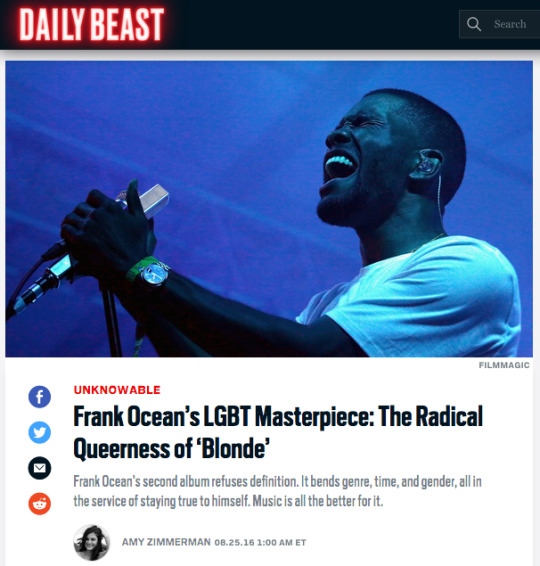
Like many outsiders, Frank Ocean betrays an obsession with identities and objects just beyond his reach. In an excerpt from the Boys Don’t Cry magazine released last week alongside an album, Blonde, a visual album, Endless, and a music video for the song “Nikes,” Ocean writes about an image of a young girl in a car. “I put myself in her seat then I played it all out in my head. The claustrophobia hits as the seatbelt tightens, preventing me from even leaning forward in my seat. the pressing on internal organs. I lean back and forward to release it. Then backwards and forward again. There it is—I got free.”
Later in the note, he remembers, “Raf Simons once told me it was cliché, my whole car obsession. Maybe it links to a deep subconscious straight boy fantasy. Consciously though, I don’t want straight—a little bent is good.” Ocean is describing his car fanaticism, an obsession that has defined him, while simultaneously articulating a deep alienation. He does not fit the stereotype of the straight, suburban boy with an encyclopedic knowledge of automobiles. In fact, he seemingly finds it easier to access his memories through the figure of the young girl, whose seatbelt invokes a gut memory of entrapment.
To say that Blonde is not straight is an understatement. The album—along with the visual album, art magazine, and “Nikes” video—bends genre, bends gender, and bends time. Ocean drives his car across countries and decades, meandering, and zig-zagging. Returning again and again to scenes from his childhood and adolescence, Ocean leaves linearity by the side of the road. Music becomes a vehicle capable of impossible movement, carrying us inside a thought, inside a moment, inside a fantasy.
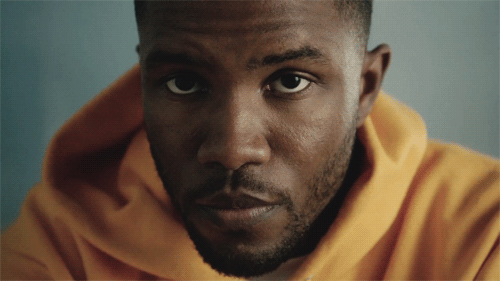
Blonde’s unconventional narrative mirrors the real-life story of how the album got here, and all the different forms it has taken throughout its extended gestation. Since the release of his last album Channel Orange in 2012, Ocean has been teasing at this return, releasing various release dates only to abandon them. The journalists who have been burned by broken promises and the fans who have eagerly awaited Ocean’s sophomore album have condemned the singer as outrageously, unnecessarily evasive. Perfectionism is one thing, but what’s the point of setting deadlines only to defy them? Or building a staircase when you should be making music? Or stepping so far out of genre that half the tracks on your album don’t even have a drum beat?
Frank Ocean dashes expectations and refuses definitions for a reason. His phobia of labels and limits isn’t just an affectation—its essential to his art and his self-expression. In 2012, on the cusp of Channel Orange’s release, the critically acclaimed artist published a description of his first love, a male friend who didn’t romantically reciprocate. Ocean’s sexuality is, as he describes it, “dynamic”—a self-assessment that hasn’t stopped journalists from pigeonholing him as bisexual or gay. This refusal of conventional terms is becoming more and more common among younger generations, who increasingly reject binary constructs. Dynamism is at the heart of both the artist and his oeuvre. It’s also part of an ever-evolving definition of queerness.
Just like Blonde, which refuses to stand still, queerness is less of a location or endpoint and more of a horizon. In the words of queer theorist José Muñoz, “Queerness is not yet here… Put another way, we are not yet queer. We may never touch queerness.” Here queerness is defined not by a destination or a term, but by constant motion. For Ocean, this theorization is tantamount. As Ocean told GQ in 2012 in regards to his uncategorized sexuality and music, “I’m giving you what I feel like you can feel… The other shit, you can’t feel. You can’t feel a box. You can’t feel a label.” By refusing to claim an identity, he reserves the right to constantly redefine.
This is not to say that Blonde fully evades the question of homosexuality. In “Good Guy,” Ocean croons about being taken on a date to a “gay bar.” The date then fizzles into romantic disappointment: “I know you don’t need me right now / And to you it’s just a late night out.” Ocean’s LGBT influences are also on display in “Ambience 001: In a Certain Way,” a short interlude on Endless that samples the voice of iconic drag queen Crystal LaBeija.
But Ocean references bitches just as often as he references boys. It’s the kind of irreverence and mutability that makes Ocean such a difficult gay icon, and such an intriguing queer one. Frank does not seem inclined to take on any responsibilities as the hip-hop world’s pre-eminent gay artist—a label he’s never claimed and does not seem likely to. While he wrote eloquently and openly on the Orlando Pulse shooting, Blonde doesn’t contain any similarly political gay statements or eulogies.
Throughout the album, visual album, and magazine, he seems more preoccupied with disorientation than orientation. While Apple Music lists the album as Blonde, the cover art reads Blond. This interchangeable masculine and feminine is at the heart of the video for “Nikes,” a song named after a traditionally masculine hip-hop fetish. The video weaves together shots of Ocean in glitter and heavy makeup with nude men and women, dancing in angel wings. Ocean’s ability to sample from gendered aesthetics and expectations even as he pulls from various genres and indulges in multiple media reveals his unflinching commitment to flexibility in all things. And while Frank makes this restlessness look like art, and even makes it look like fun, it’s more than just lighthearted experimentation. To define oneself leads to pressures and responsibilities—to produce another Channel Orange, or to pen the next gay anthem. On “Nikes,” Ocean shouts out Trayvon Martin, musing, “That n**** looked just like me.” Identities, from race to sexual orientation, can trap, define, even kill. Artistically, they can stagnate. And so, Ocean keeps moving, citing over 40 musical contributors on an album that refuses categorization or ideological co-option.
Of course, the way Ocean approaches queerness is partly pragmatic. Hip-hop has never had a gay superstar. As a community, the hip-hop world is still plagued by homophobia, and prohibitive molds of masculinity. While male rappers are expected to abide by certain conventions, there appears to be a loophole for MCs who have expanded their artistic reach. One example is Young Thug, a rapper who was featured in Calvin Klein’s Autumn/Winter 2016 campaign. In a video for the brand, Young Thug spoke to his penchant for pulling outfits from menswear and womenswear, explaining, “I feel like there is no such thing as gender.” While Young Thug’s remarks triggered a bit of a backlash, with hip-hop fans and media outlets musing on his sexuality, there also seemed to be an increasing understanding that queerness isn’t synonymous with homosexuality. It’s also important to note that Young Thug stated his progressive philosophy in a fashion forum, not on a track or in a Breakfast Club interview. Jaden Smith was similarly embraced by sartorial tastemakers for his androgynous style, proving that while gendered experimentation might be rare in hip-hop, its male denizens can find precedent and encouragement by dipping into outside worlds.
Like Kanye West before him, Frank Ocean is exploiting this distancing loophole by presenting himself as a multi-faceted artist. By making stairs, shooting film, and producing magazines, Ocean defies the rapper label just as he shirks a gay or bisexual identification. By deliberately refusing to be known as a gay rapper or a bisexual man in hip-hop, Ocean can partially skirt the homophobic bias that the hip-hop community can’t seem to shake.
Queer, which is not a single, stable identity, might be more accurately described as an active critique of the normal and the normative. Normality is not universally accessible, or universally desired. The queer subject, forced to the outside, is given the complicated gift of perspective. Blonde is made rich through this looking in. Frank Ocean, a sexually fluid, black man who attempts to defy gender, is just the outsider to take on America in 2016. In Ocean’s capable hands, the familiar becomes strange. In Boys Don’t Cry, Ocean queers Americana, photographing a man putting on his underwear in a field, and sharing images of young men with automobile logos shaved into their heads. In a featured poem, Kanye West manages to write a deeply unsettling ode to the most ubiquitous fast-food joint in America: McDonald’s. In “Nights,” Ocean is homeless in Texas after being run out of Louisiana by Hurricane Katrina. In all these complementary projects, things that are quintessentially American—McDonald’s, cars, the South—are taken and made unfamiliar and disquieting through the lens of race, trauma, and sexuality. Ocean’s unique commentary, and the alienation that informs it, is a quiet, powerful critique.
In the wake of rights-based victories like gay marriage, some queer activists have questioned a movement that prioritizes the chance to be the same over the freedom to be different. This is where Ocean, and his rejection of the straight, comes into play. In a piece from Boys Don’t Cry titled “Boyfriend,” he writes, “I could say that I’m happy / they let me and my boyfriend become married / I could say that I’m happy / but cross my heart I didn’t notice.” It’s as if Frank is deliberately playing with expectations or hopes for his gay politics by claiming apoliticism. Of course, queer folks might argue that this apathy toward marriage equality is a deeply political rejection of homonormativity. And Ocean goes both ways—on “Seigfried,” he ponders and then ultimately dismisses the allure of the heteronormative. Ocean wonders if his lack of convention makes him a “fool”—“Maybe I should move / Settle down, two kids and a swimming pool.” But in the end, he wagers, “I’d rather live outside.”
In Blonde, “living outside” is a personal sacrifice and a risky wager. Barred from the acceptability of straight love or the stability of a legible gay identity, Ocean has no choice but to keep moving, and keep longing. Vexation and disappointment are everywhere, and satiation seems impossible. With such an uncertain future, he looks to the past as he heads for the horizon. On “Futura Free,” the final track on Blonde, Ocean excerpts an old conversation between his childhood friends from the hip-hop crew Odd Future. On an album marked by romantic disillusionment, this return evokes the family making and platonic love that is so vital to queer communities. In a world where love disappoints and normalcy isn’t an option, there’s an art to making your own family, and finding intimacy in unexpected places.
Ocean’s steady stream of emotionally unavailable partners, unanswered texts, unfulfilled dreams and missed connections speaks to a specific brand of disoriented desires. In common parlance, sexuality is often reduced to orientation. But queer theory proposes that the desiring subject is so much more than the gender of the person they have sex with. This is certainly the case for Ocean—Blonde isn’t about who he loves, but how he loves them. His bravely broadcasted intimacy is proof that boys do cry, that sexuality can be fluid, that love can be unrequited, platonic, queer, and cruel. He makes the familiar strange, but he also makes the strange familiar. Even the most traditionally masculine straight boy will see pieces of himself in Ocean’s fluid oeuvre—childhood memories that could belong to any of us, texts that sound familiar, landscapes we’ve seen, half-asleep, out the window. In queering the world and chronicling the queer, Ocean’s bent masterpiece brings under-represented modes of desire to the mainstream.
via DailyBeast // 8/25/16
0 notes
Text
Lemonade and A Black Panther Comic
There are a wide variety of mediums that are used by artists of all background to to draw on. It’s an artist’s canvas and it’s up to the artist to choose how he or she may convey his or her message. There are times however when two different mediums produce similar messages however. Beyoncé’s Visual album Lemonade and Roxane Gay’s comic, Black Panther: World of Wakanda, both offer a visual setting for what feminists can do when there’s no restraint to their artistic creativity. World of Wakanda has a graphic story when it comes to female empowerment while Beyonce’s Lemonade touches upon Beyonce’s struggle as a woman and as an African American and she uses that as means empowerment for black feminism.
Beyoncé’s Lemonade is her 6th studio album and her second studio album. The album’s official description is “a conceptual project based on every woman’s journey of self-knowledge and healing." Lemonade has a theme in every song which is mainly about female empowerment or in other cases, Beyoncé’s struggle in life. Each and every song of lemonade has a tribute or a reference to a prominent black person in history.
There are a total of twelve songs in the visual album. “Pray You Catch Me” has a captivating introduction to the visual album. Black woman are seen to be gazing into the camera while Beyonce narrating the monologue complements everything that’s going on. The use of the wheat fields create a natural ambience that sets a calm mindset into the viewer. The scene where she drowns herself in water was also alluring as she was really just talking about how her relationship was suffocating her. The ending to the song was important because she walks out of the building as a new woman. Just before, she was stripping the black clothing away which signaled for a transformation in character.
That character transformation is characterized and embodied in the next song, “Hold Up.” Beyonce goes on a car wrecking spree in a huge yellow dress that makes her stick out like a sore thumb. It’s a wonderful contrast for her to wear that dress as she’s obviously feeling anguish and darkness. The contrast also kills the illusion of a well dressed women being gentle. A woman, no matter what she wears, can also be reckless and destructive.
In “Don’t Hurt Yourself”, the gender roles are completely reversed. In the previous songs, Beyonce was dressed more effeminately but now that she’s ushering in a masculine dress code as well as an aggressive tone in the video, which in the context of the lyrics makes her the dominant force in whatever relationship she’s in. One may find it unclear whether Beyonce is talking about her Husband Jay-Z or if she’s trying to get her audience of women to start standing up for themselves against faithless lovers but it is very obvious that Beyonce is trying to spread that intense energy to a wave of women that needs to know that they too have the ability to stay strong, powerful, and dominant. The part of the lyrics from the song that gives that away is “I am the dragon…, I’m the Lion… Beautiful man, I know you’re lying.”
While the song is titled “Sorry”, Beyonce is nowhere to be seen as apologetic. There are bits and pieces of gender reversals in the outfits but there’s a gradual change towards more effeminate dresses again. The song is explicit in its message; A woman to not feel bad or to even apologize when a man does not properly treat a woman. She talks about how she doesn’t care about the fact that her man is at the club or that she’s about to leave the person. It’s a powerful song that can easily influence those who are on the fence with a dead relationship.
The 8th song, “Sandcastles”, Beyonce changes the mood from electric and 80s hip-hop to ambient and relaxing. Her ability to slowly go from new and bezerk to reformed and forgiving is remarkable as well as inspiring. This is where the personal art of Beyonce’s album starts to end and where her album starts to hit modern day issues.
The song “Forward”, is the first hard hitter when it comes to the modern day issues. Mothers are seen to be holding pictures of their loved ones that passed away which were due to gun violence or police brutality as the album’s production does coincide during the time when riots against the police in the US were ongoing.
Beyonce gives the audience a multitude of performances and attitudes signifying the struggle a woman will have to go through in a lifetime. Each and every one of these performances in her individuals songs have the value multiplied when one realizes that there are tributes towards artists and black live movements throughout the album. Malcolm X’s speech, "The most disrespected person in America is the black woman. The most unprotected person in America is the black woman. The most neglected person in America is the black woman.", is sampled into the song, “Don’t Hurt Yourself.” Malcolm X advocated for the black power movement back in the 1960s(Breitman 1965) which Beyonce is doing herself right now in the album. Instead of being a direct spokesperson however, she’s using her album as the medium for black empowerment. There are cameo appearances from celebrity guests as well. Serena Williams, a famous tennis player, Zendaya, a talented singer and actor, and Winnie Harlow, a Canadian fashion model, spokesperson and activist(Primeau 2016). These are all black women who struggled with a society that discriminates too often against black women and still succeeded in life. Probably the most powerful appearance in the album are the mothers of Eric garner, Michael Brown, and Trayvon Martin. The melancholic atmosphere created from each of these individual woman's anguish and sorrow can bring a tear to all those who are affected by police violence.
The album can be very polarizing at times because how the mood and tone changes so often but the message of empowering black women to struggle and persevere in a time when the world seems to be against them is fruitful and wholesome because this album can feel like a fresh breathe of air in terms of audio and visuals for black feminism. There are subtle moments in the album where you can see black women off cultures, from the North cities of the US to the Southern wheatfields the country. Even though Bell Hooks would argue that the album was made for an international audience because at the end of the day, Beyonce is still trying to make a profit(Hooks 2016), it can be said that the subtle adaptations of life as well the heartfelt tributes and cameos of people of african descent make it so that the true audience gets the message that they need to here. The album weaves a connection between Beyonce’s personal pain as well as America’s history with racism(Rogers 2016).
Black Panther: World of Wakanda is comic book story that takes place in Black Panther’s microcosm. The comic book talks about two women, Ayo and Aneka, who are apart of an elite task force, are having an affair amidst a war with the Atlanteans. The second part of the comic revolves around Zenzi, a woman who seemingly has the ability to make people do what they want and is looking to liberate herself from the war torn society that she’s from. The second part of the story is where the female empowerment is compelling as one can see where the seeds of a long adventurous struggle is being planted in terms of storytelling. While the Atlanteans seems to be a natural force of disaster, they are not the real villains in the comic. In this first issue of World of Wakanda, the real villain is more based on reality. The villain isn’t even a villain at the end of the day but Zenzi’s struggle of liberating herself and her nation as she says. However, in both DC and Marvel comics, there’s a huge lack of black supervillains(Cunningham 2010) but the writers here at least allowed for Zenzi to use her mystical powers on a group of black men that were about to terrorize her. The volume of World of Wakanda has not finished but it would not be surprising for their to be an black person in the antagonist element of the comic.
Beyoncé has an African American narrative on feminism by going into black history which in itself is a narrative of triumph over tragedy. Although World of Wakanda is still incomplete, at the end of the first issue, Amina uses her powers to find empowerment in her and wants to empower her nation. They complement each other when it comes to female empowerment through struggle. Beyonce’s Lemonade talks about beyonce’s struggle as a person when it came to her love life and also how she presented herself to her audience while Zenzi’s struggle against her violent community or how she’s viewed a lesser being all because she’s Nigandan. Zenzi chooses to stay strong instead of giving up and she’s using her mystical powers to liberate herself from that society as well as change it. The visual album also uses nature, such as the wheatfields in the introduction of the film and World of Wakanda, when it transitions to the next part of the comic also uses nature in the artwork the compliment Zenzi’s powers.
Beyoncé’s Lemonade is eye candy in terms of digital cinematography due to how well budgeted and how extravagant the atmosphere in the visual album is but because there are so many references and tribute that one may not be aware of, Beyonce’s message for female empowerment and black feminism may come off as vague and ambiguous to those viewing the album with the naked uncultured eye. In Black Panther: World of Wakanda, however, the power struggle between two nations, as well as the struggle between the women in the comic book is ever so prevalent and very obvious. One does not need to understand a comprehensive history of Marvel comics to see the struggle that is going on as the comic book is only trying to adapt modern day issues. This makes the message clear that the women in the comic wants to liberate themselves from the chains of their society and nation. While the two mediums are inherently different from one another, Black Panther: World of Wakanda and Beyonce’s Lemonade still tackle modern day issues and emphasize the same message about black feminism and how important it is as society gradually changes for the better.
References
Hooks, Bell. "Moving Beyond Pain". bell hooks Institute. N.p., 2016. Web. 6 Apr. 2017.
Primeau, Jamie. "All Of Beyonce's 'Lemonade' References & Cameos In One Handy Chart". Bustle.com. N.p., 2017. Web. 6 Apr. 2017.
Malcolm, X., and George Breitman. Malcolm X speaks: Selected speeches and statements. Grove Press, 1965.
Rogers, Holly, Carol Vernallis, and Lisa Perott. "Beyoncé’s Lemonade: She Dreams in Both Worlds." Film International (2016).
Cunningham, Phillip Lamarr. "The absence of black supervillains in mainstream comics." Journal of Graphic Novels and Comics 1.1 (2010): 51-62.
0 notes